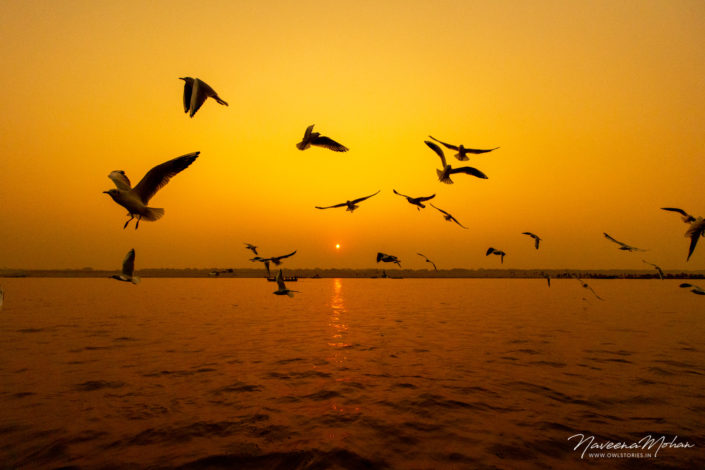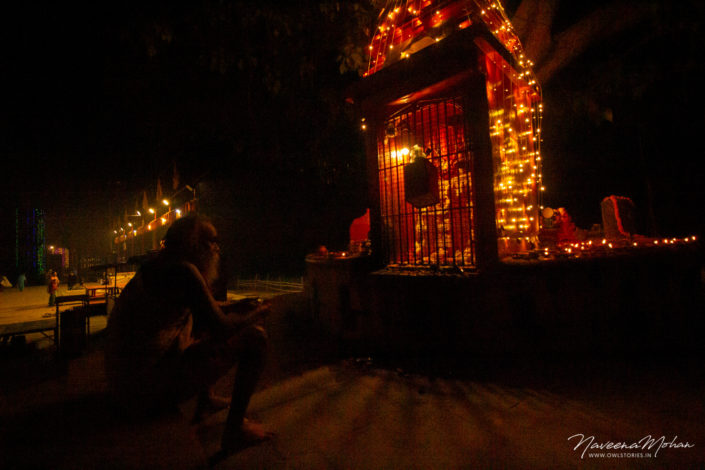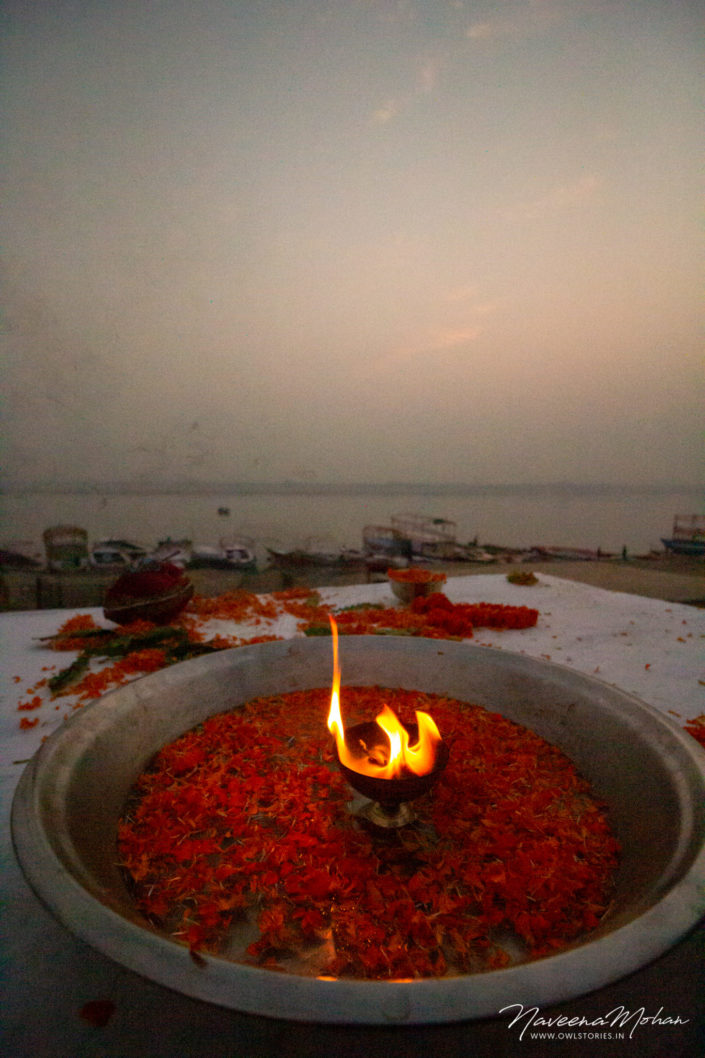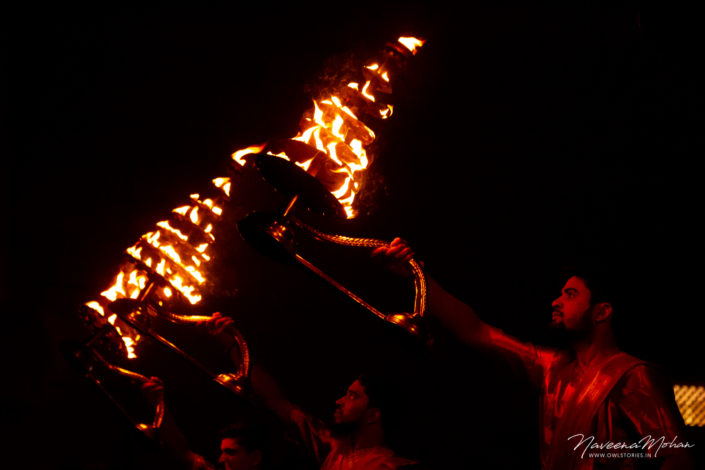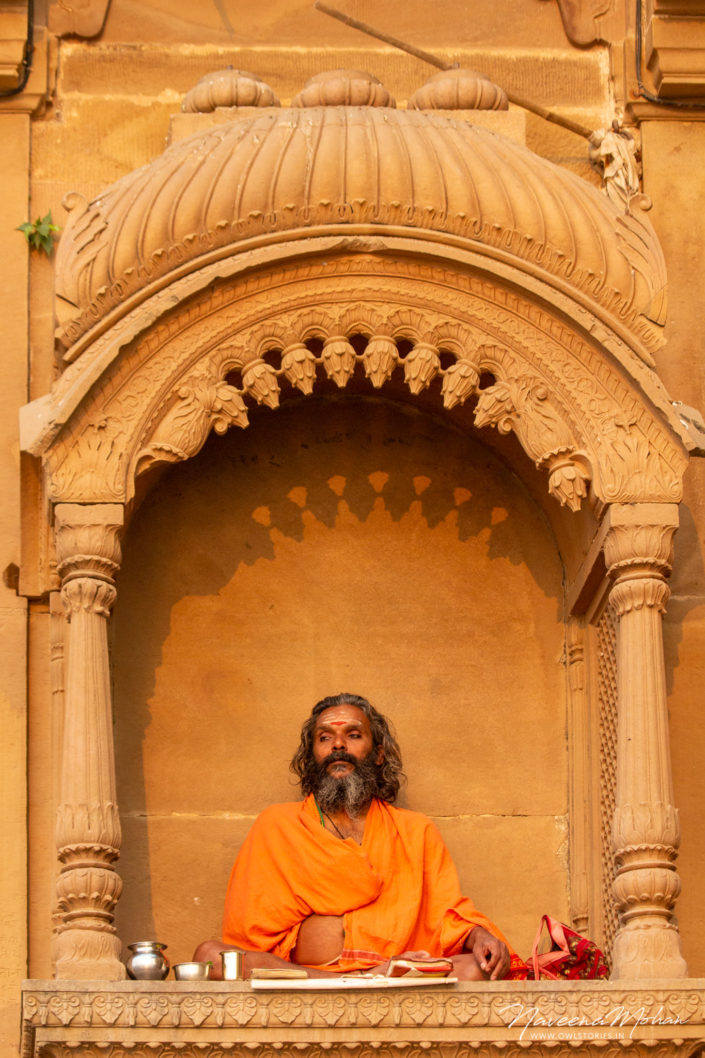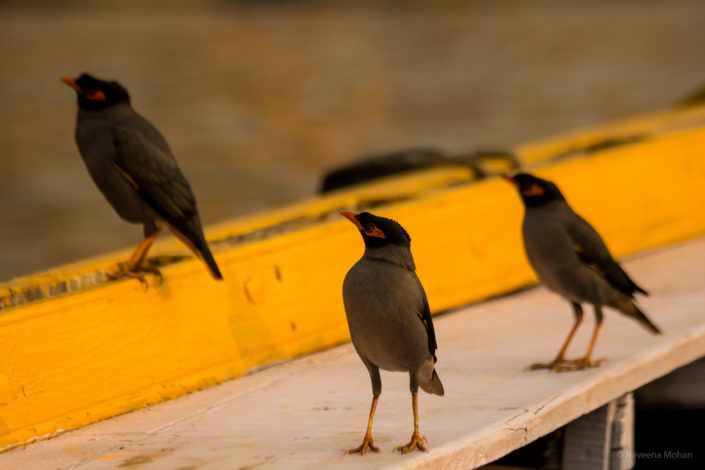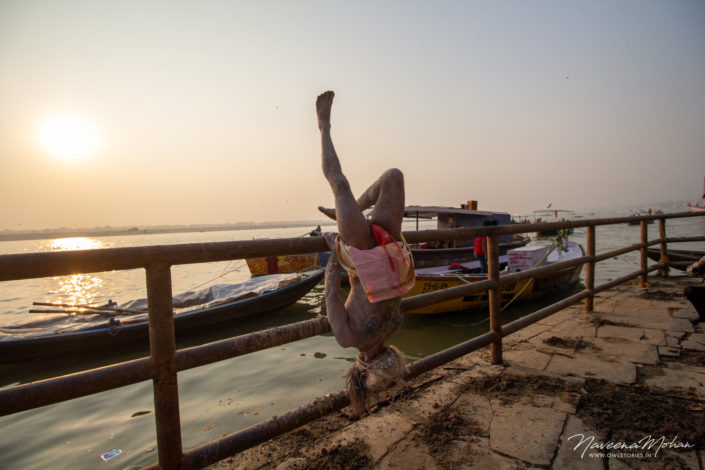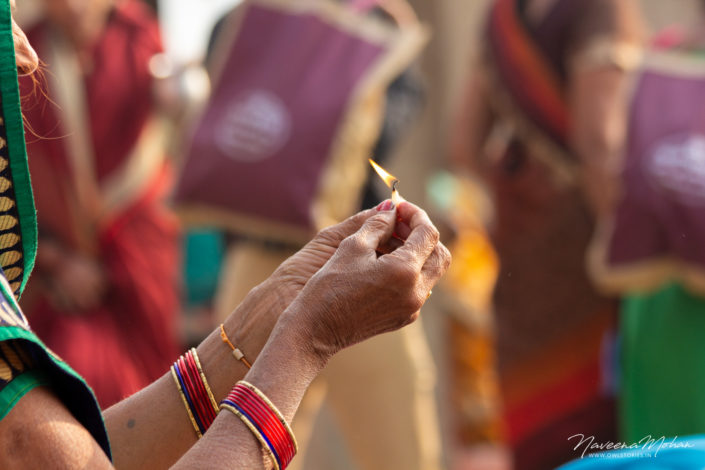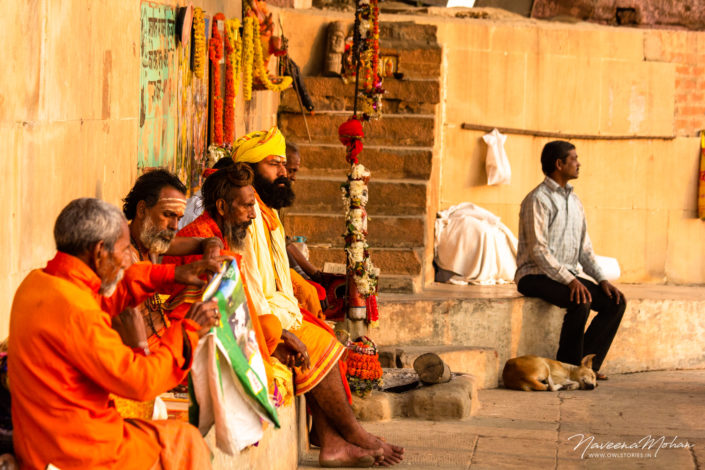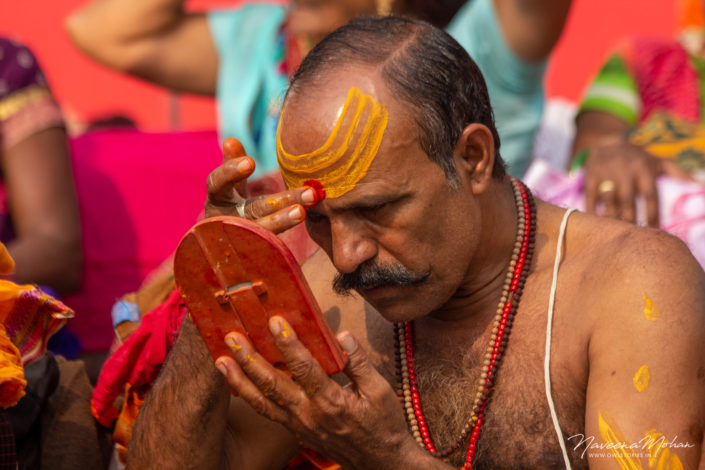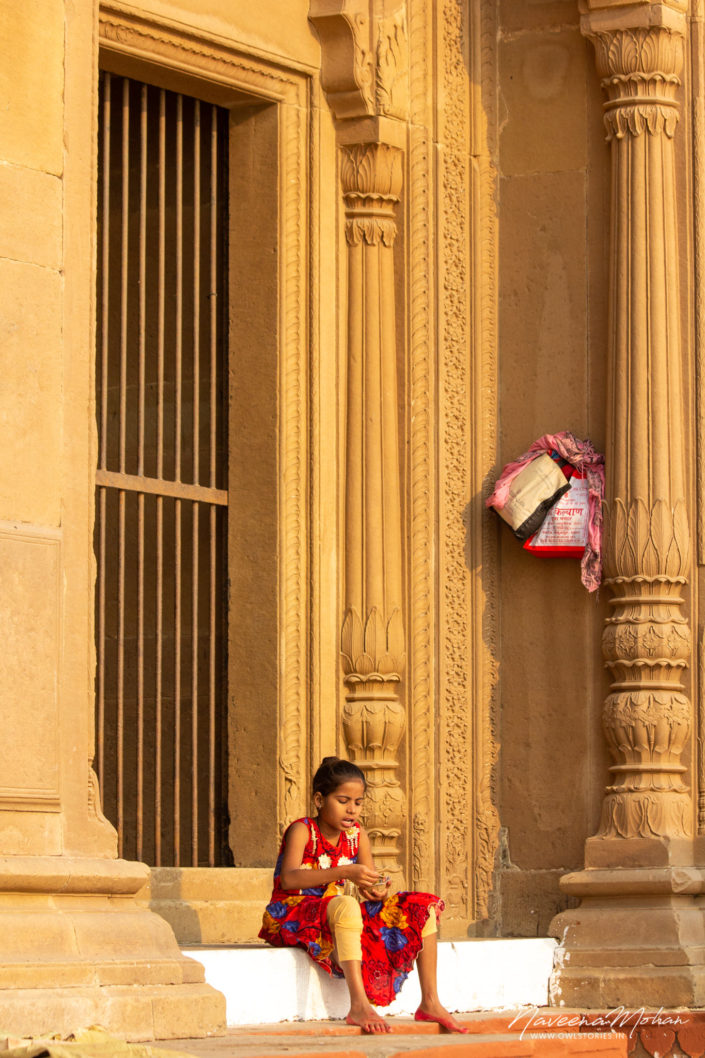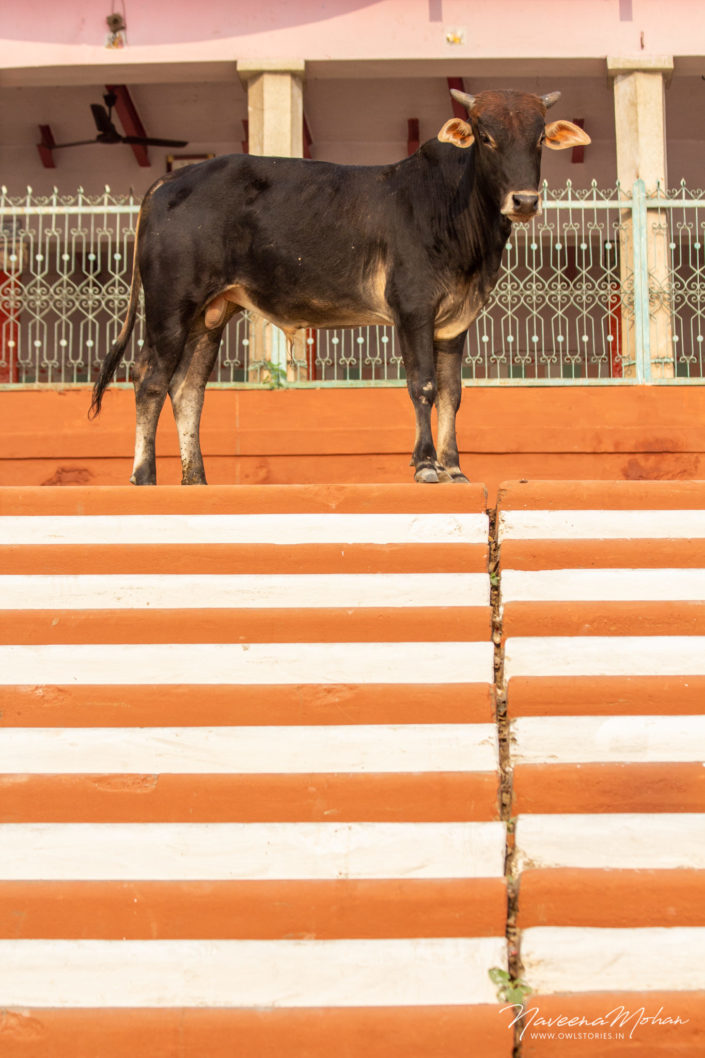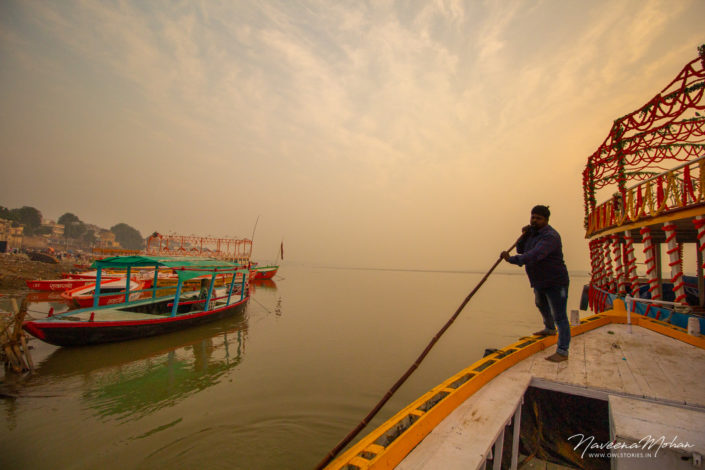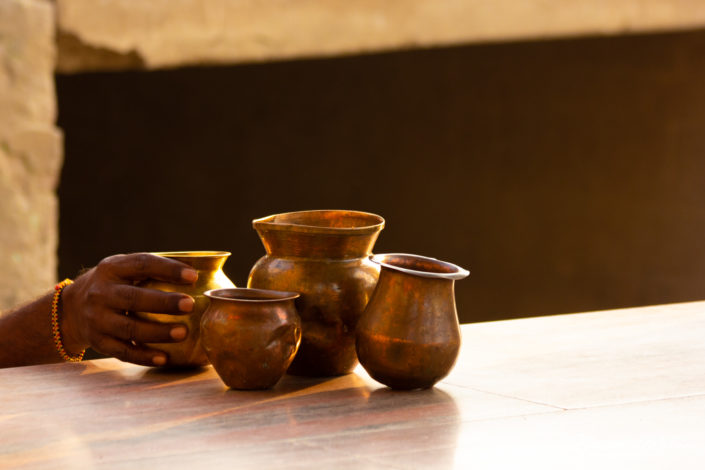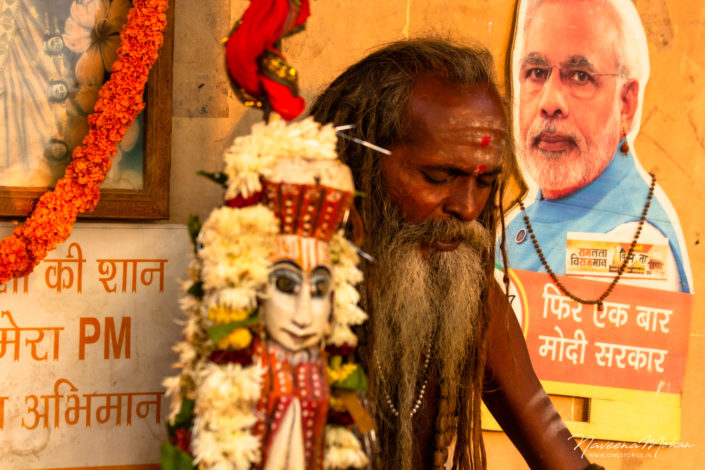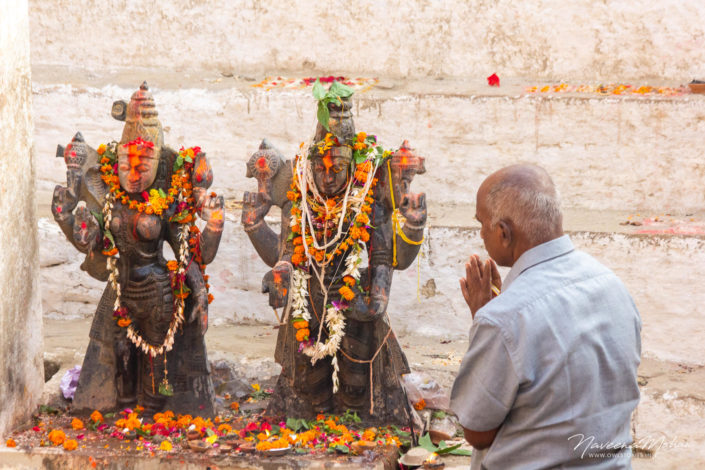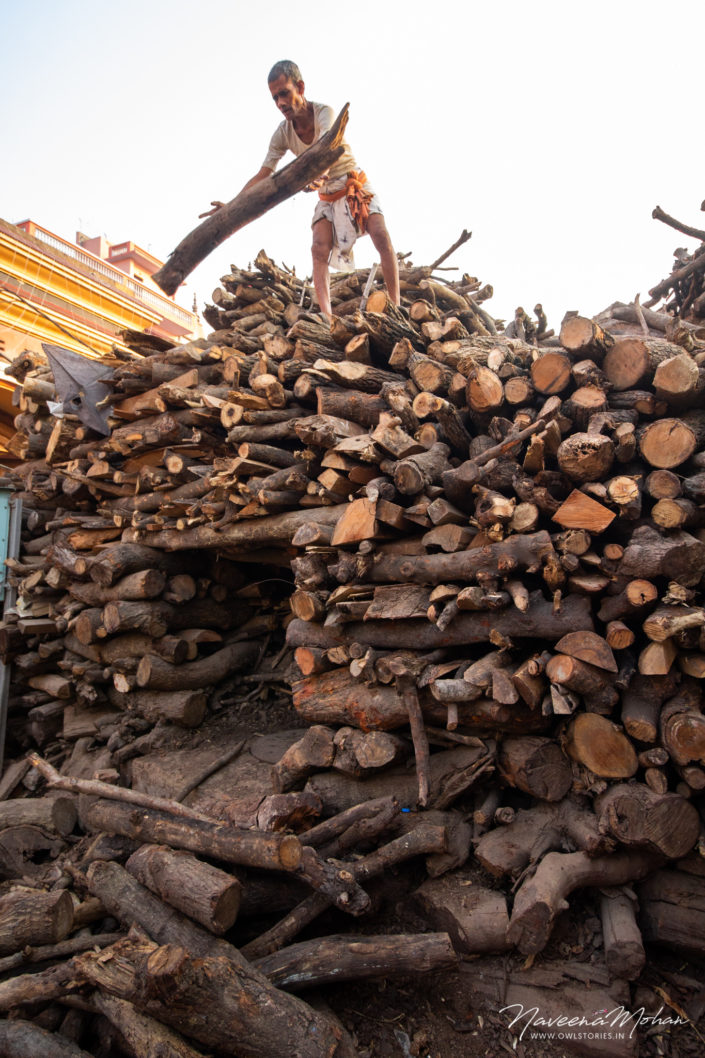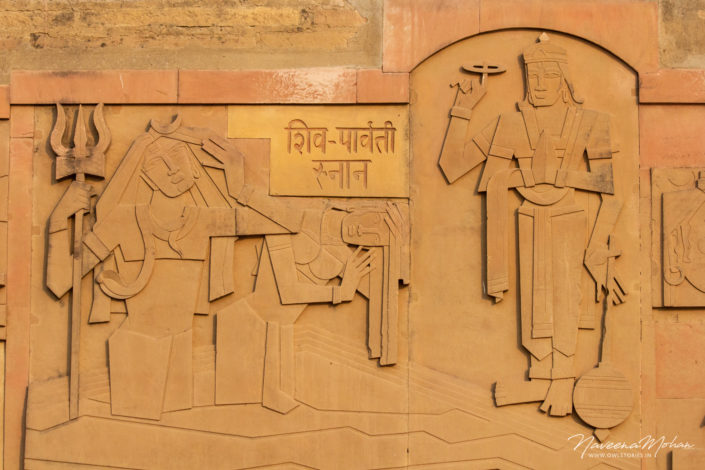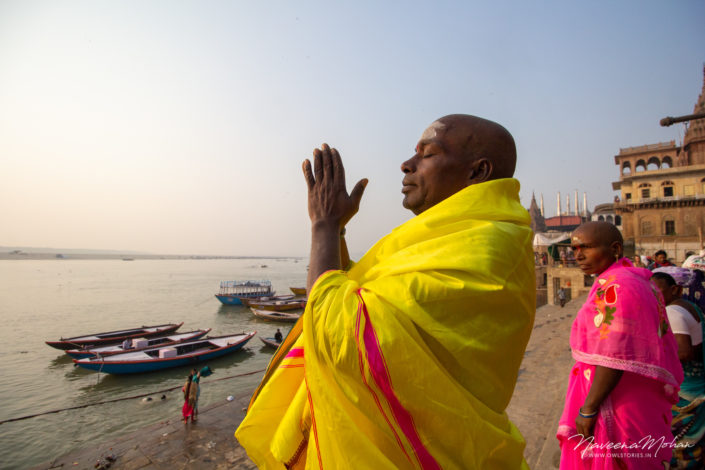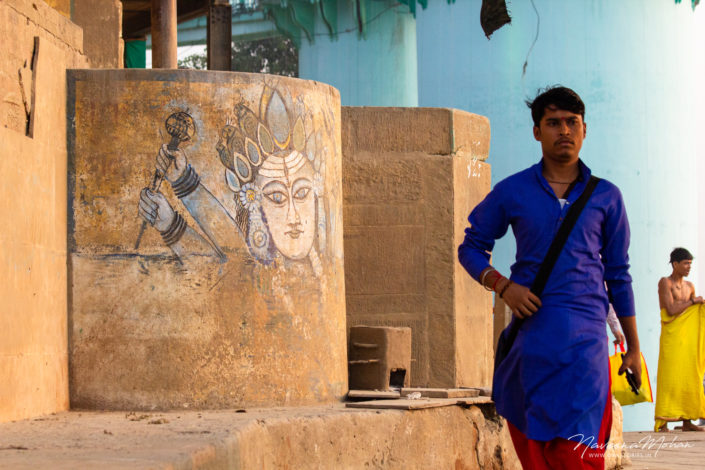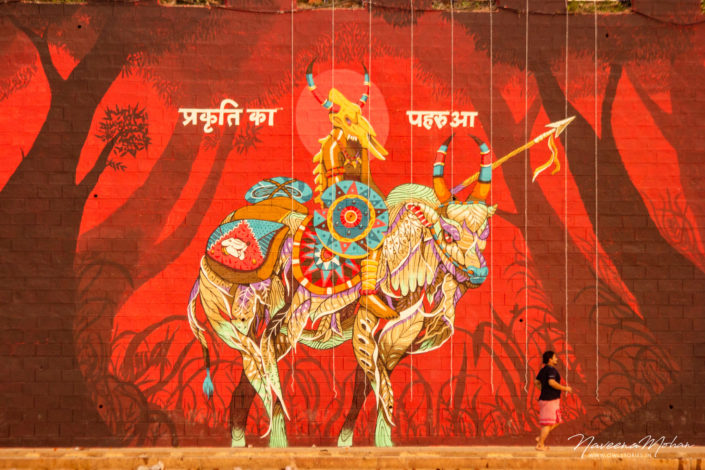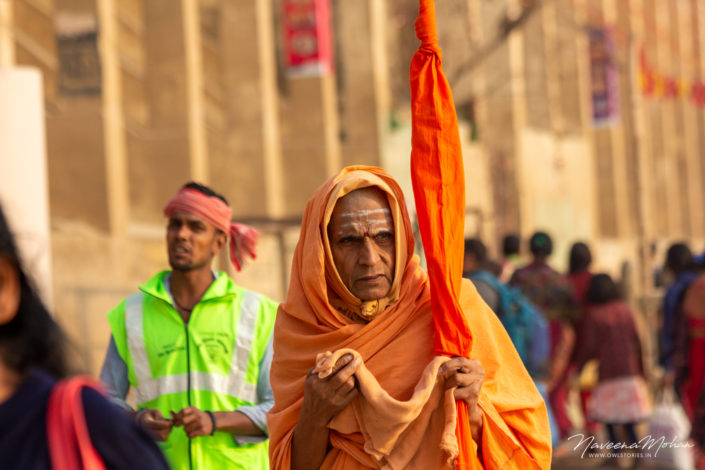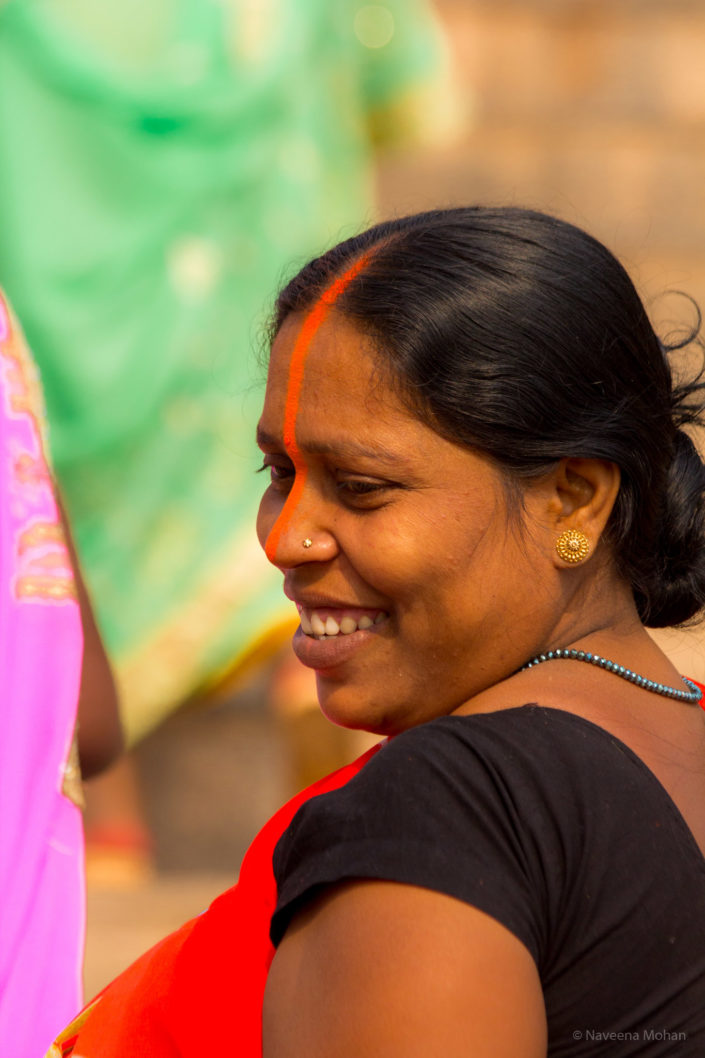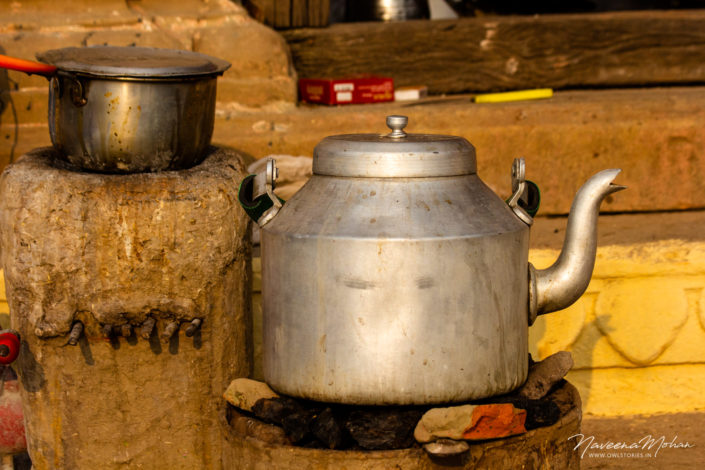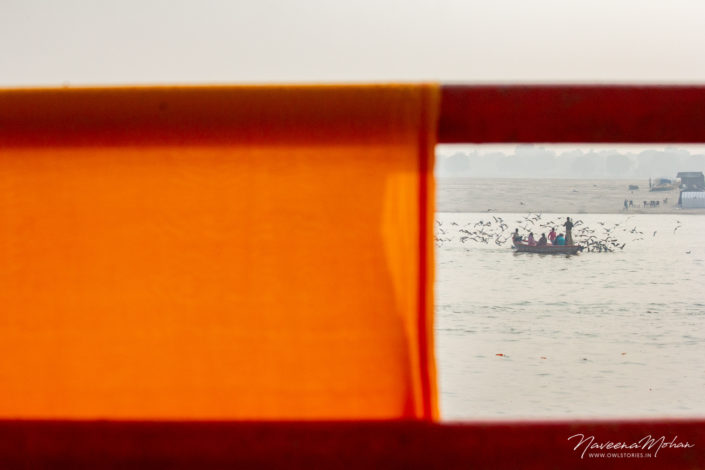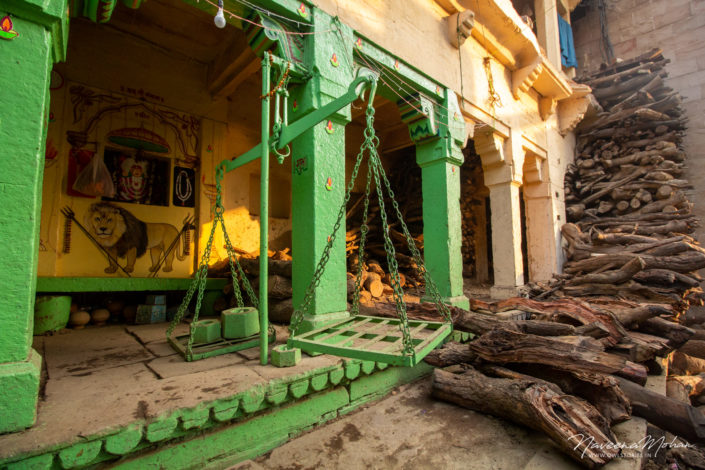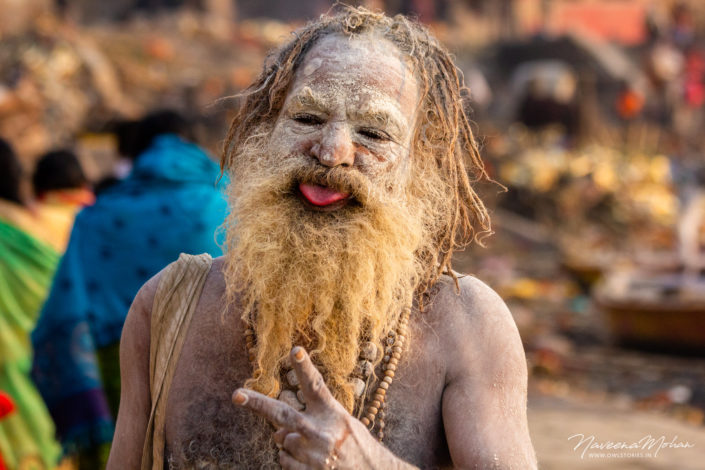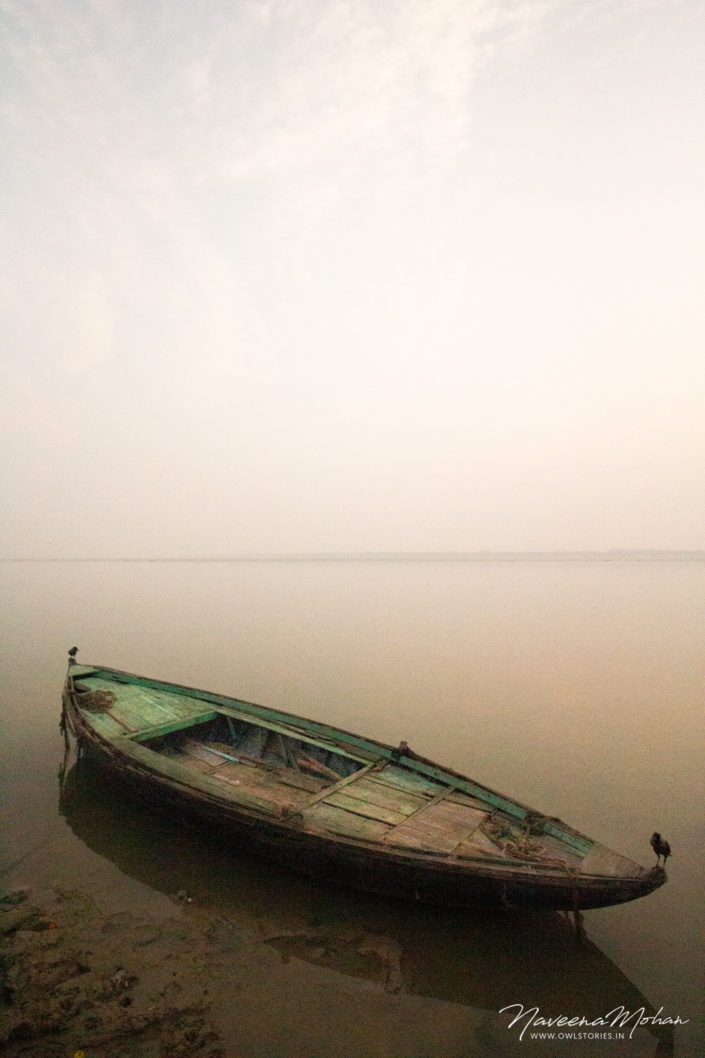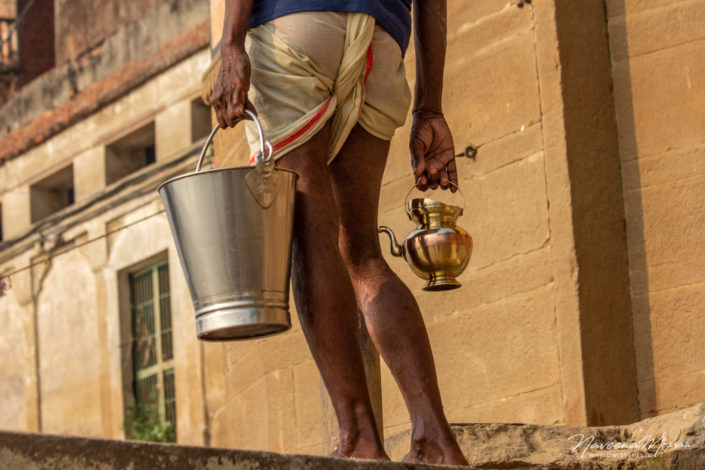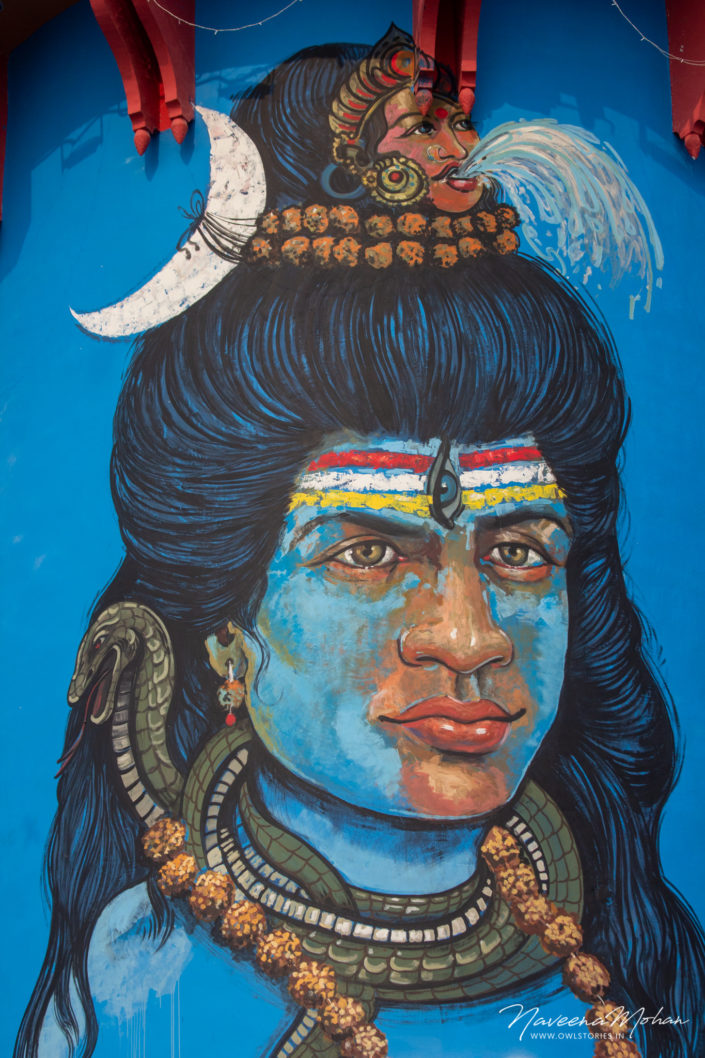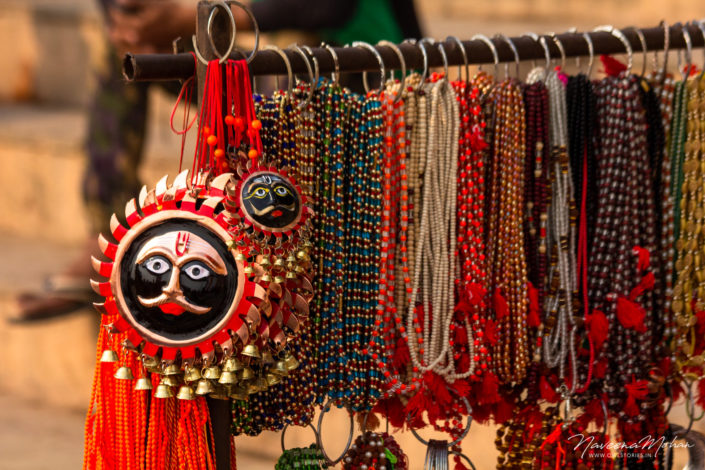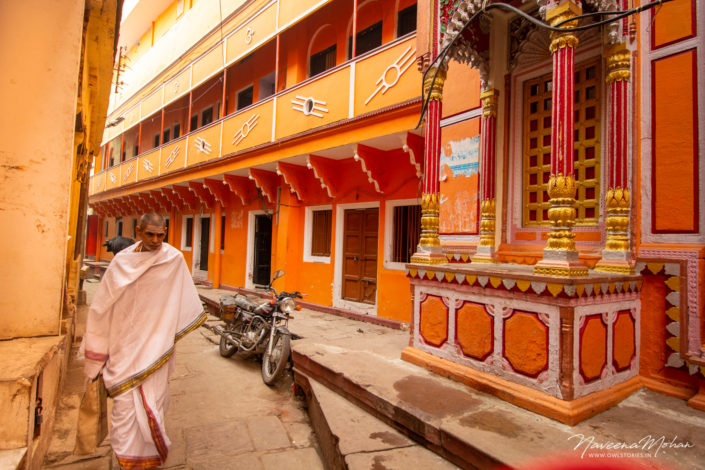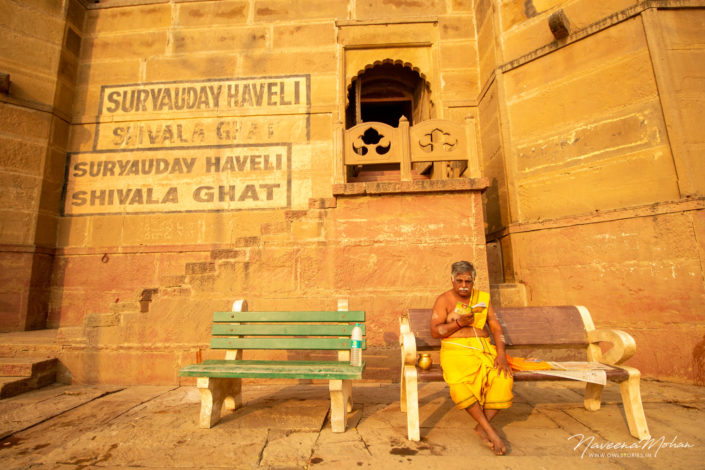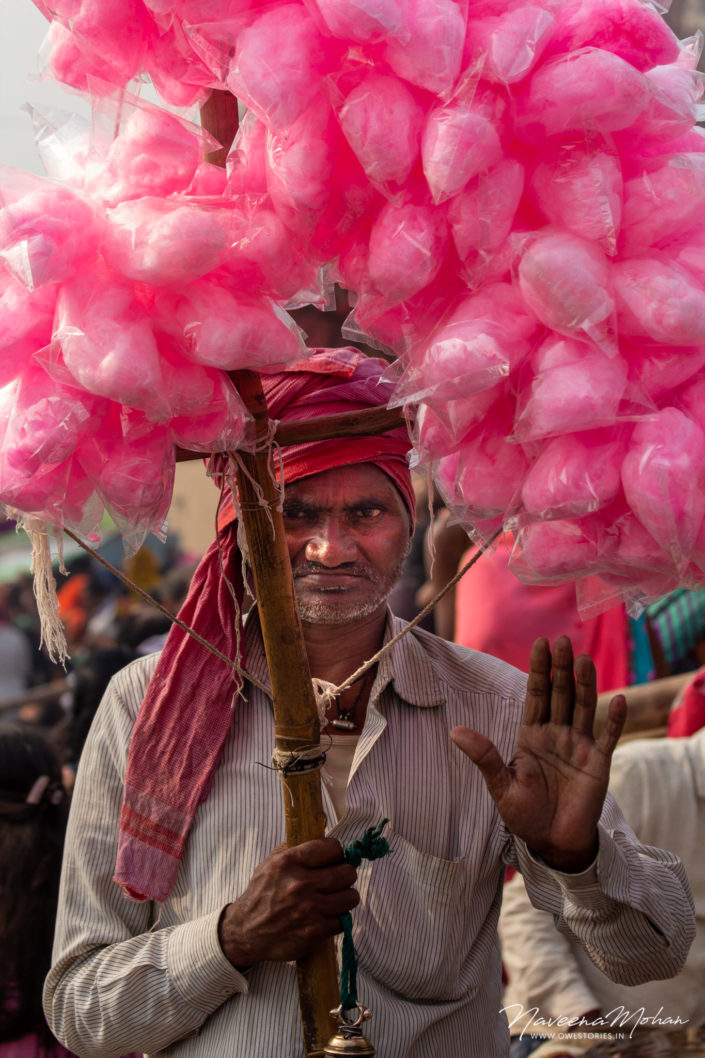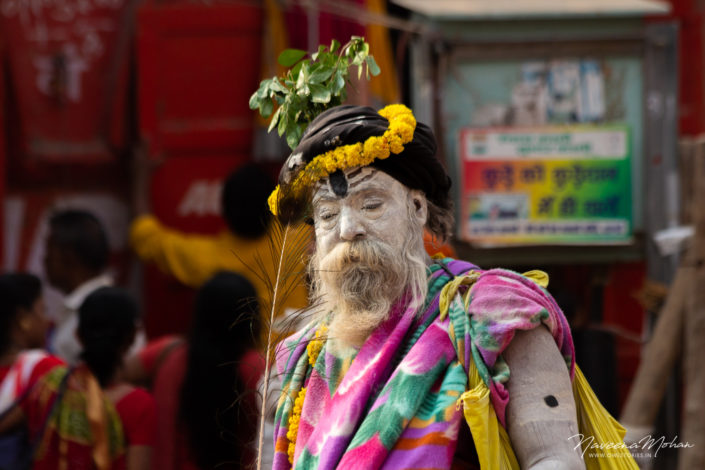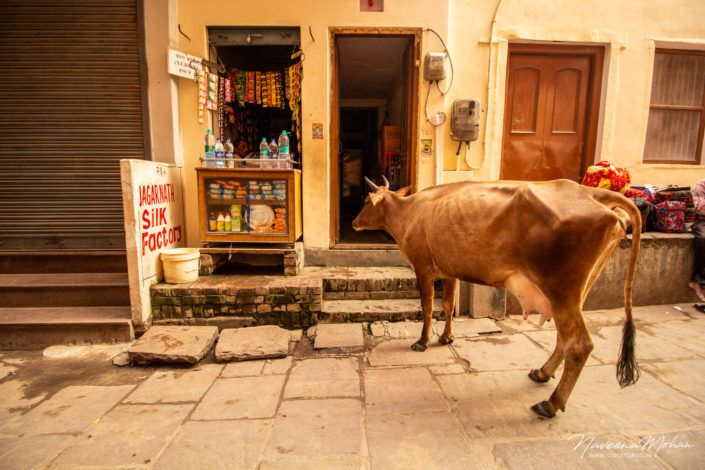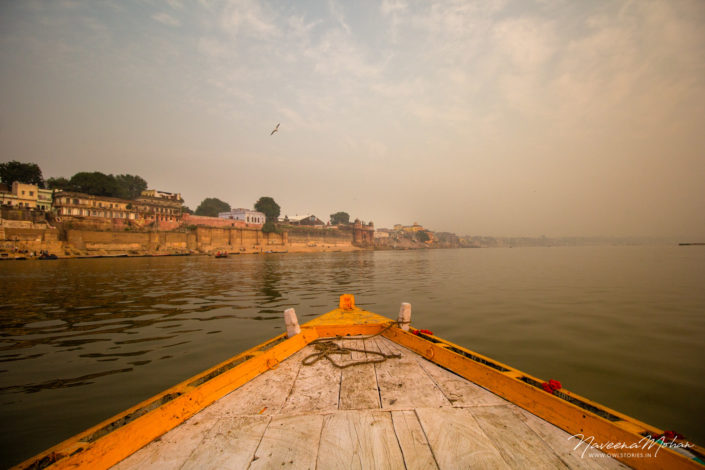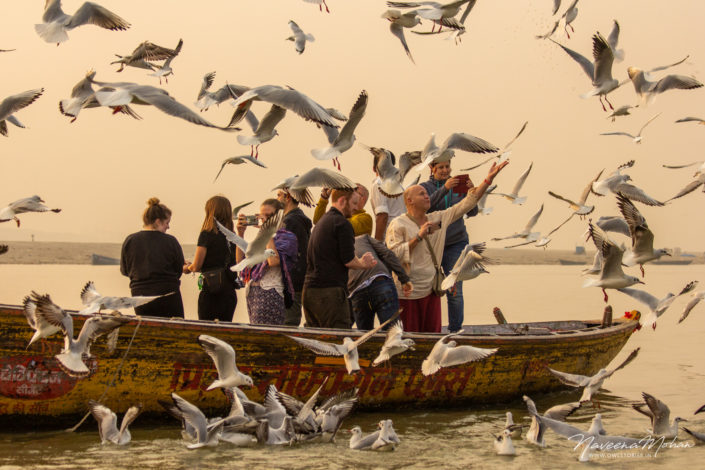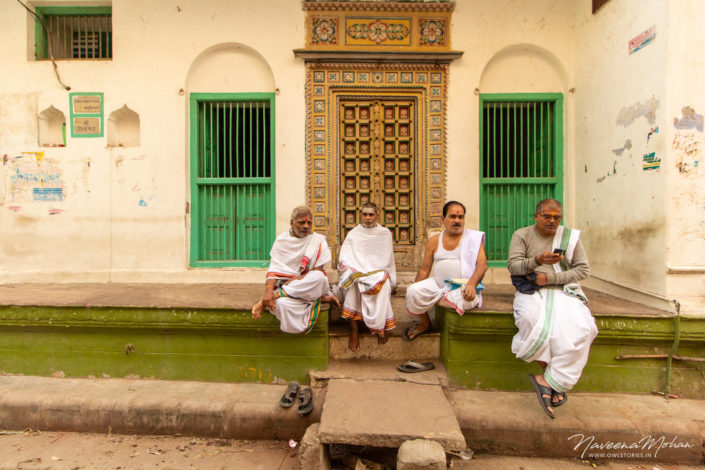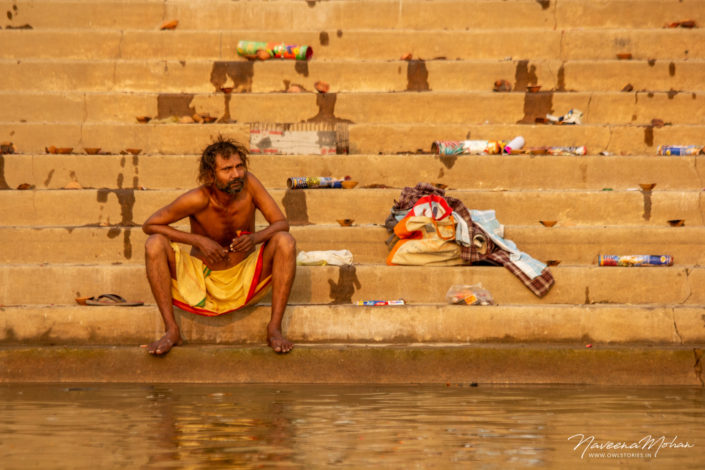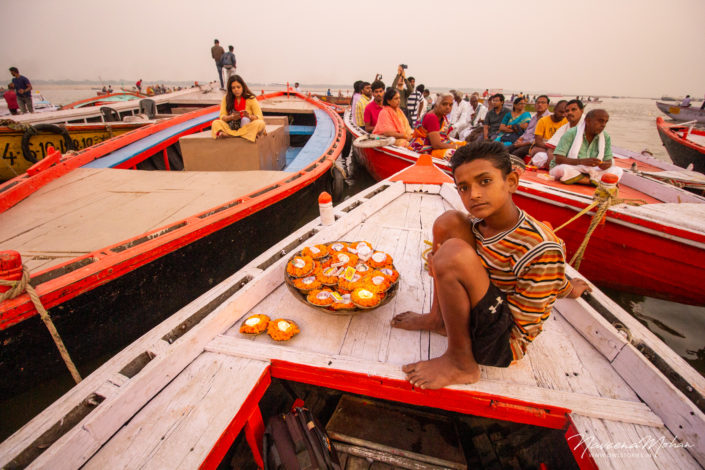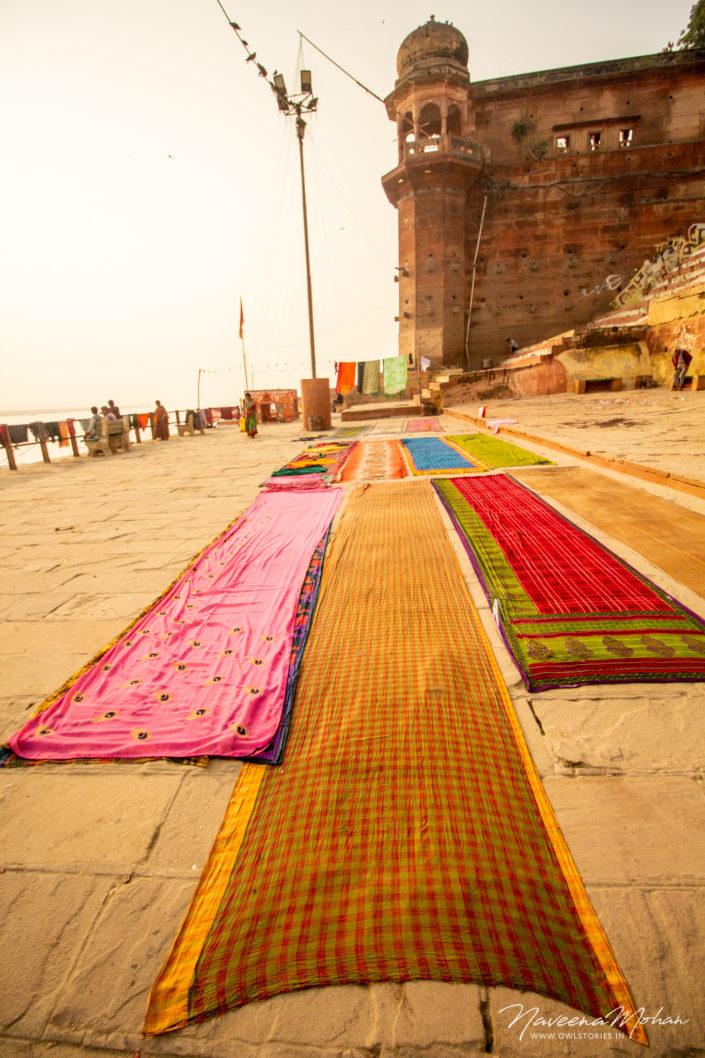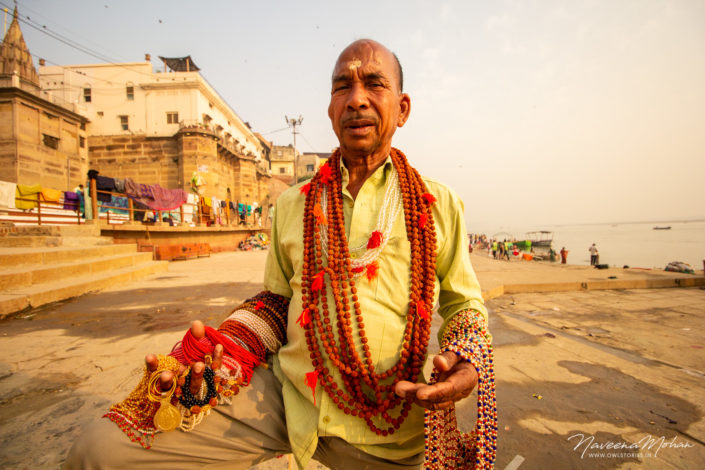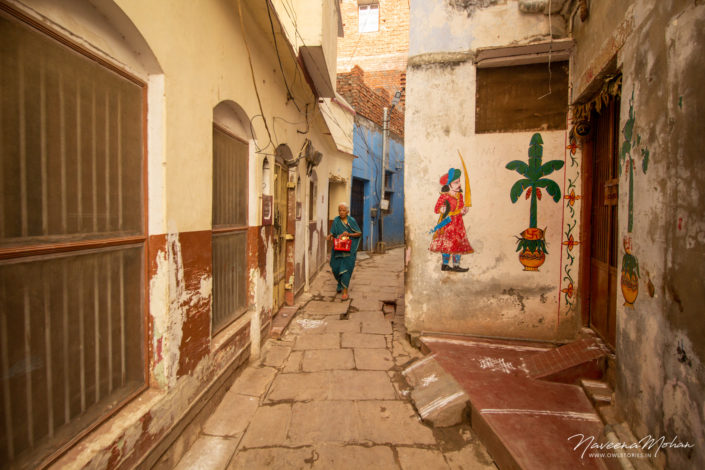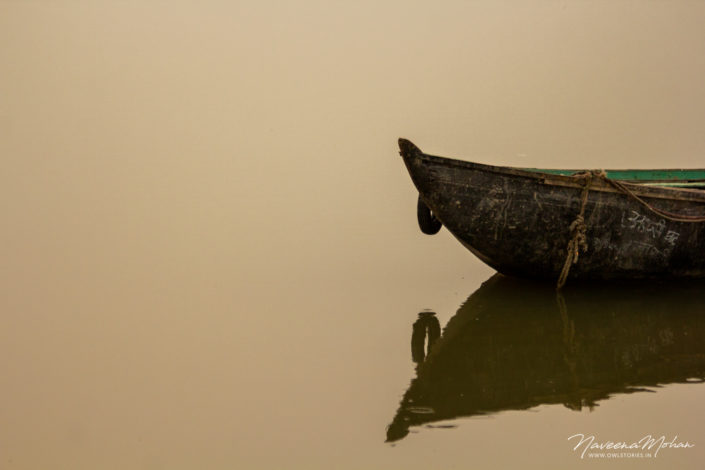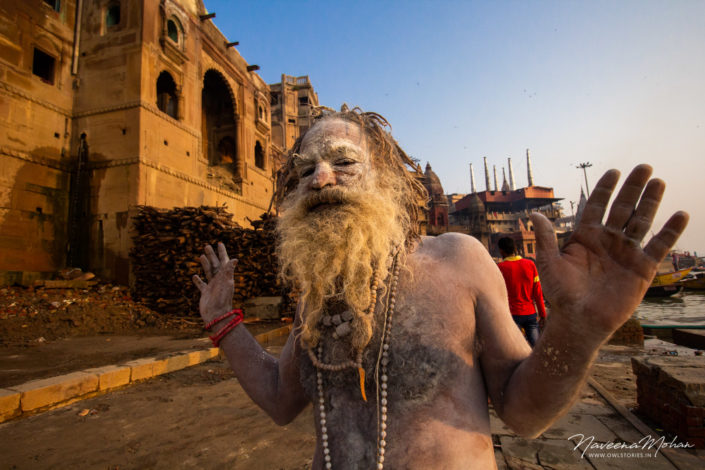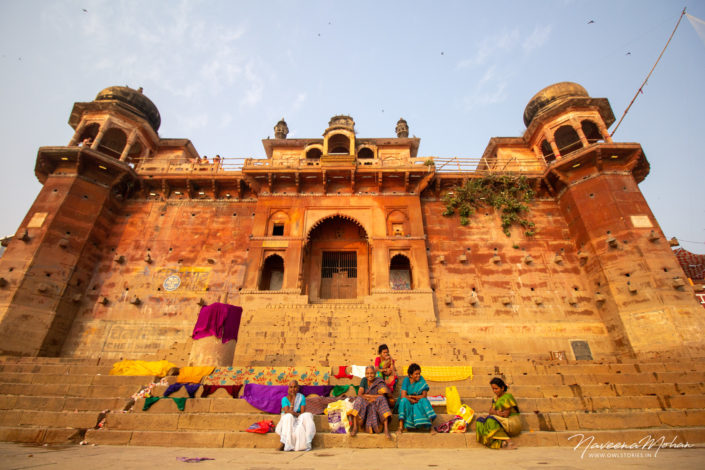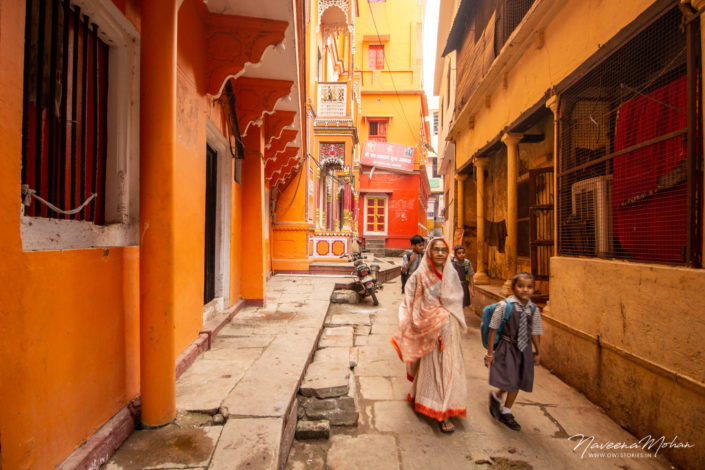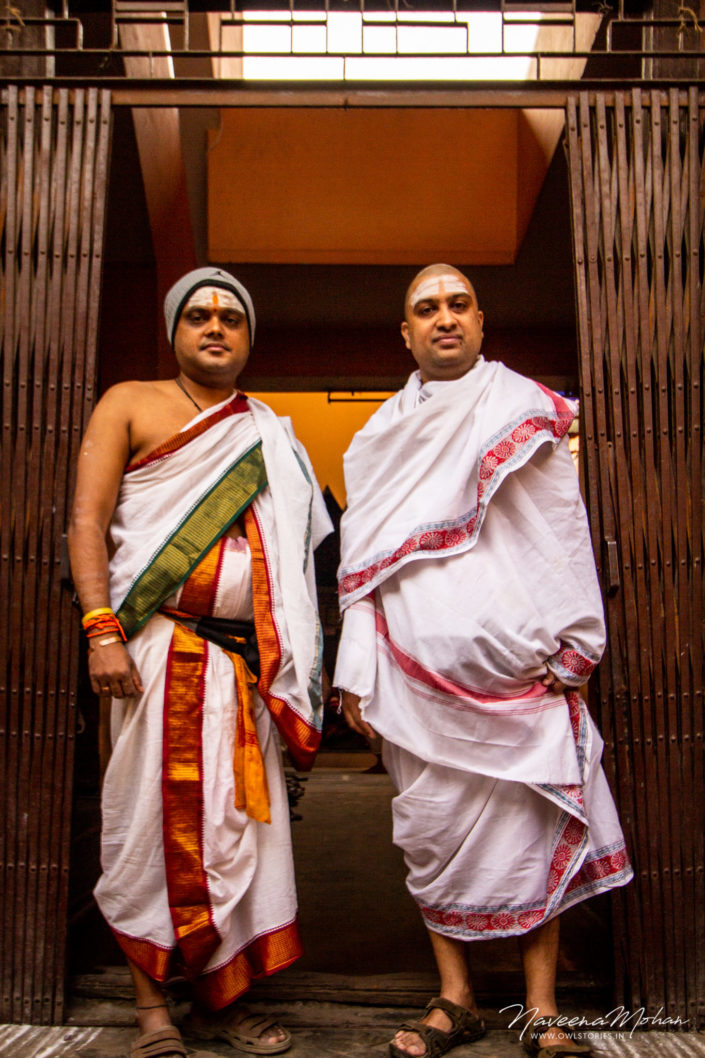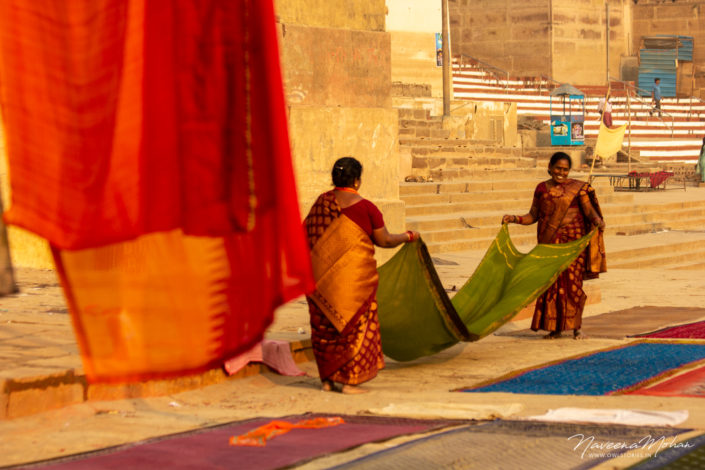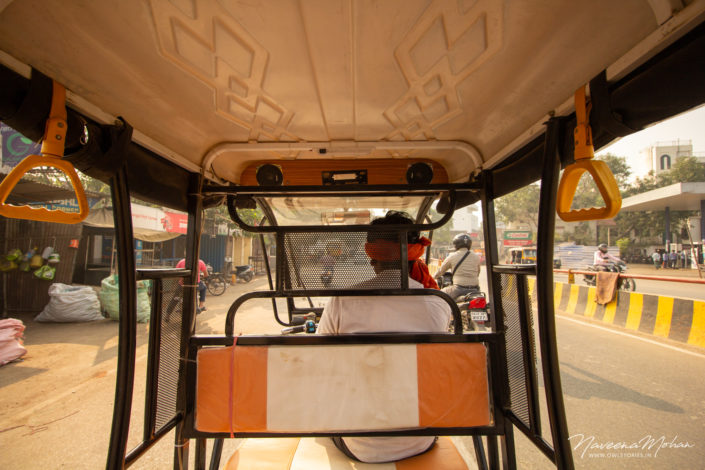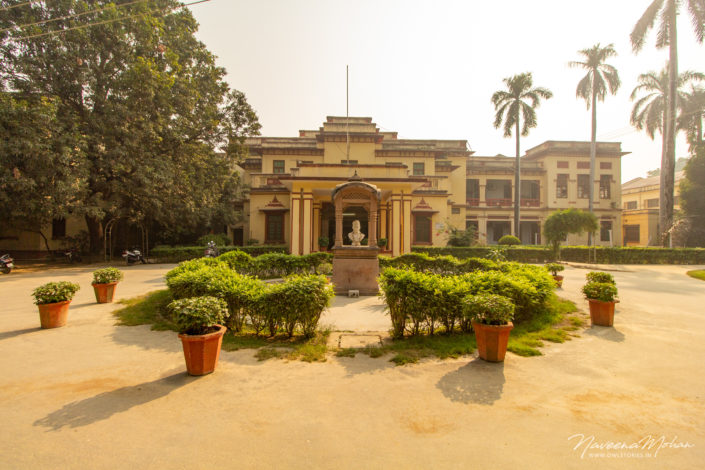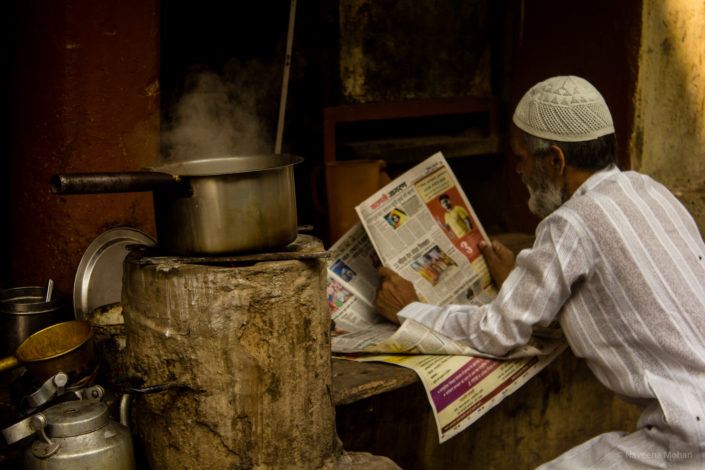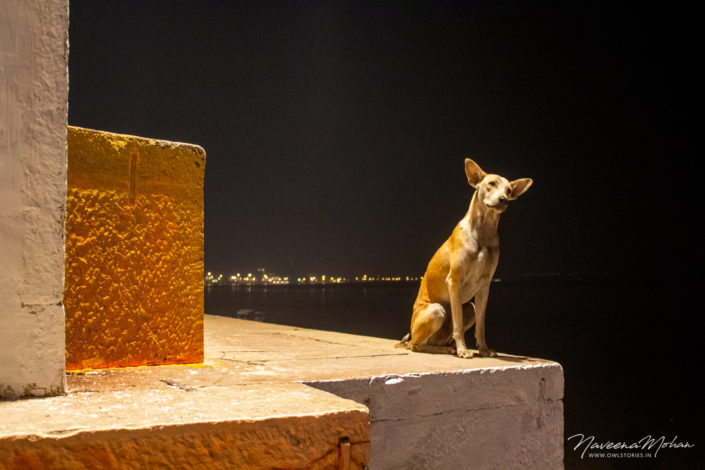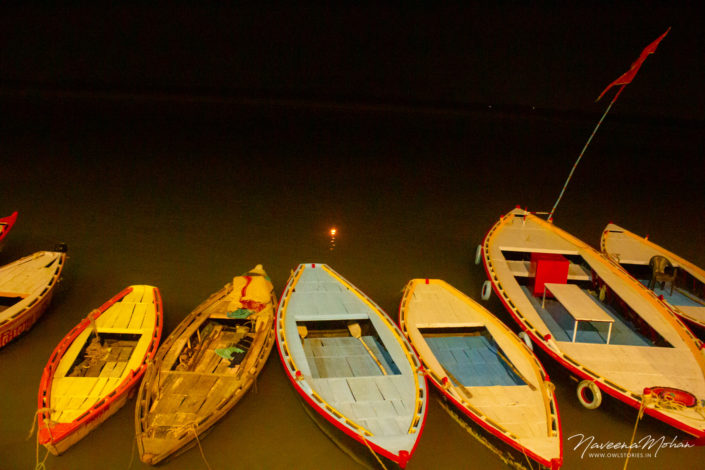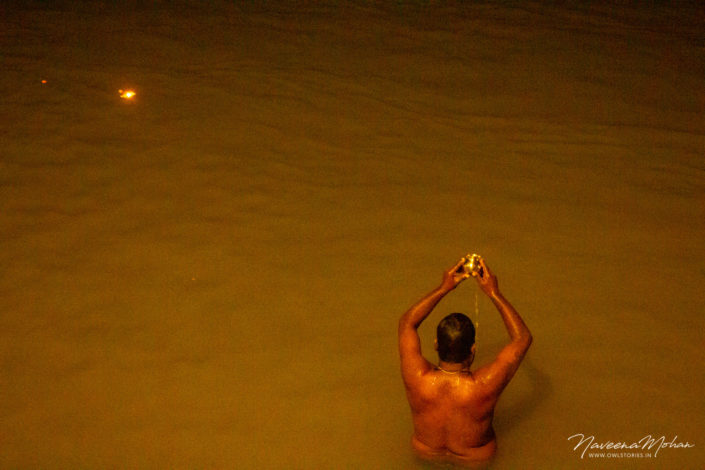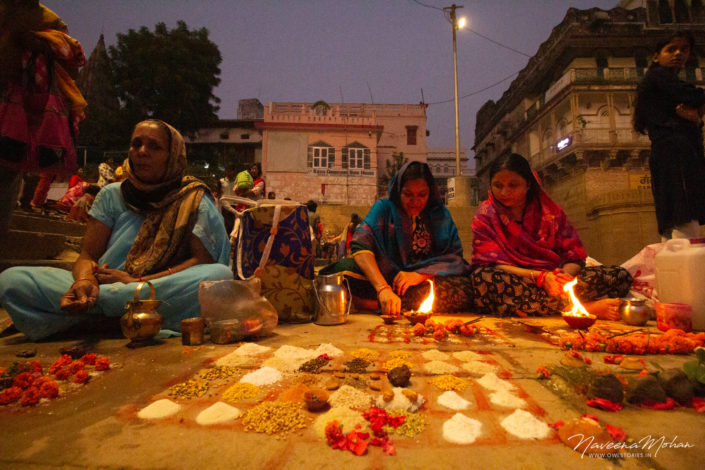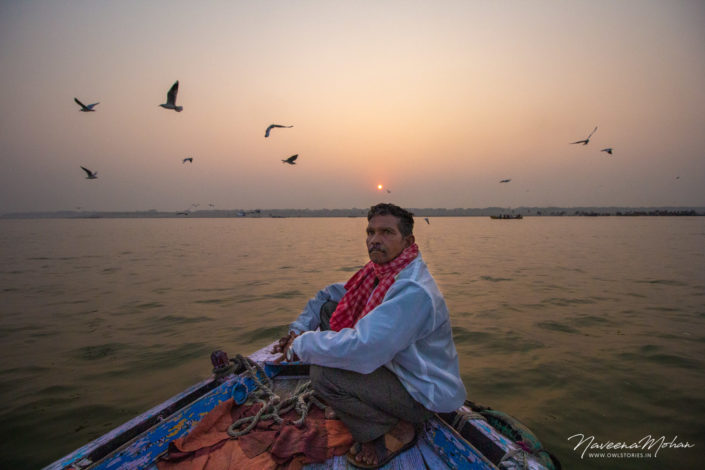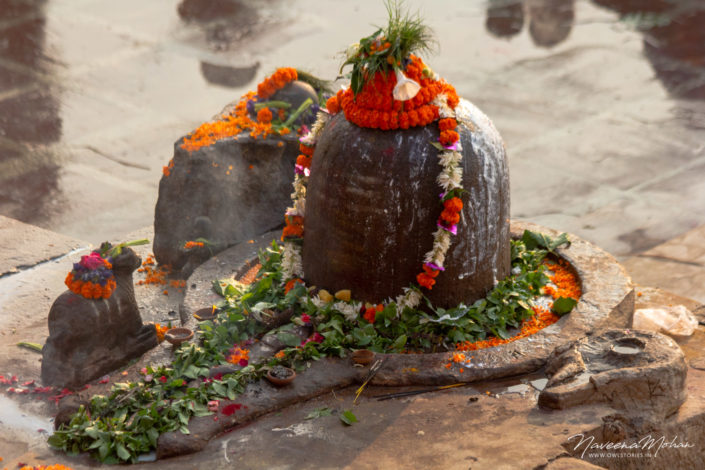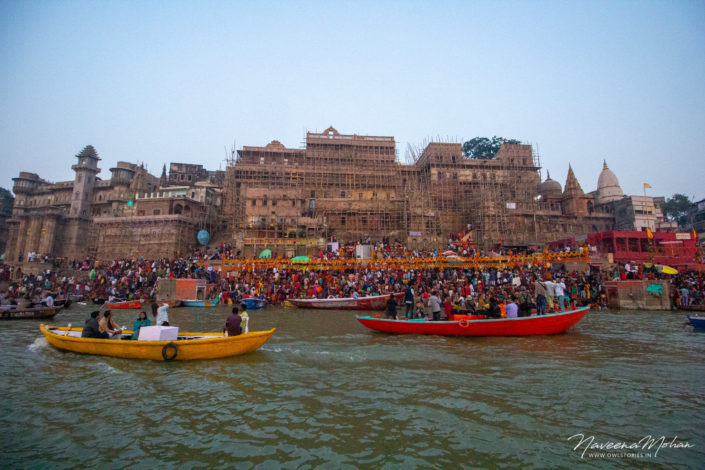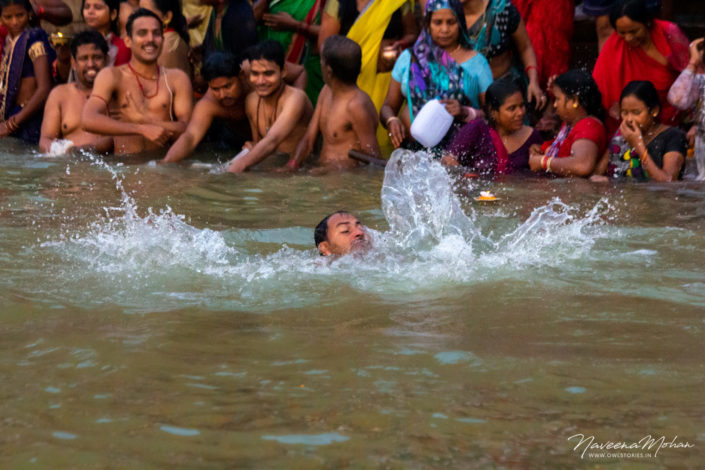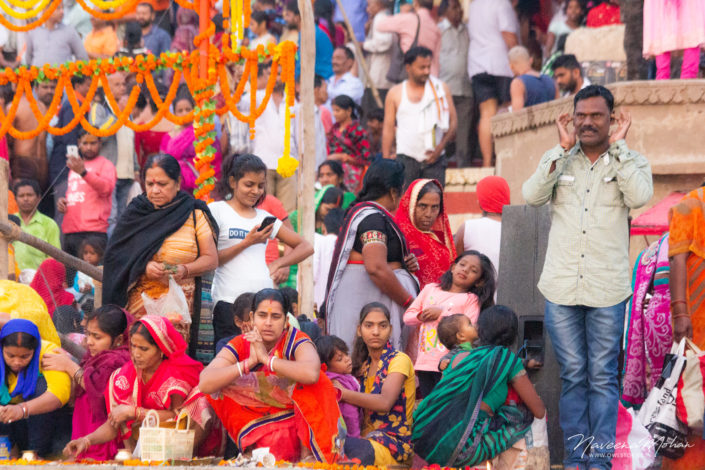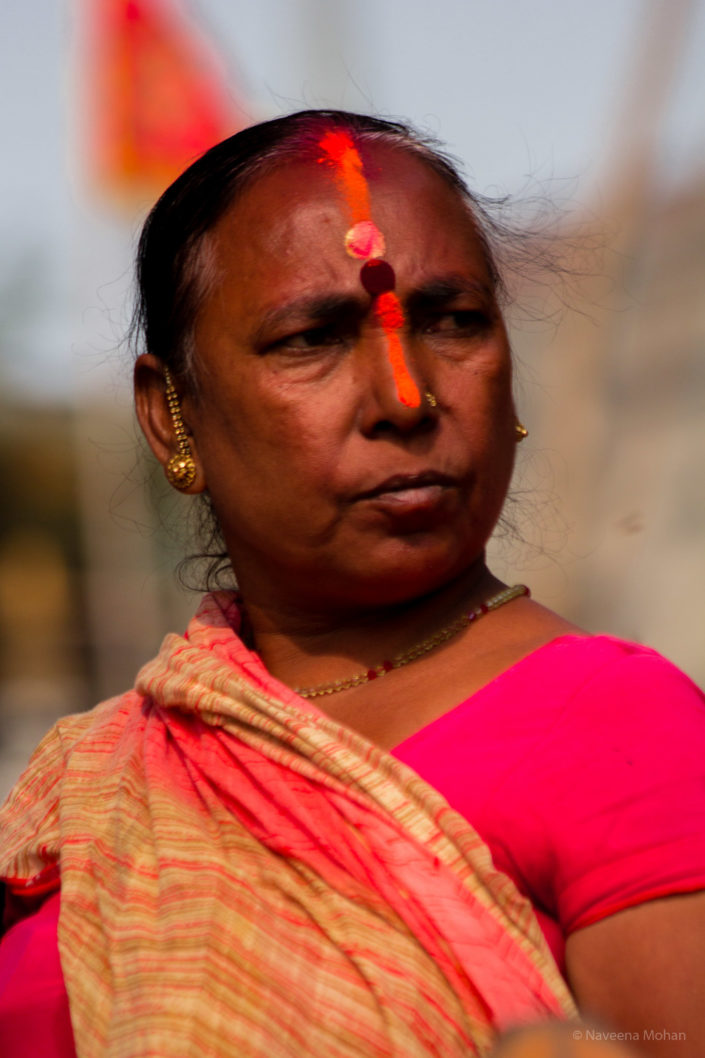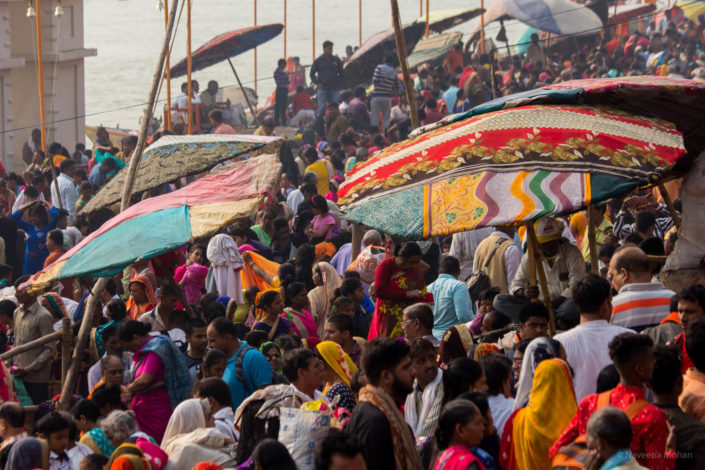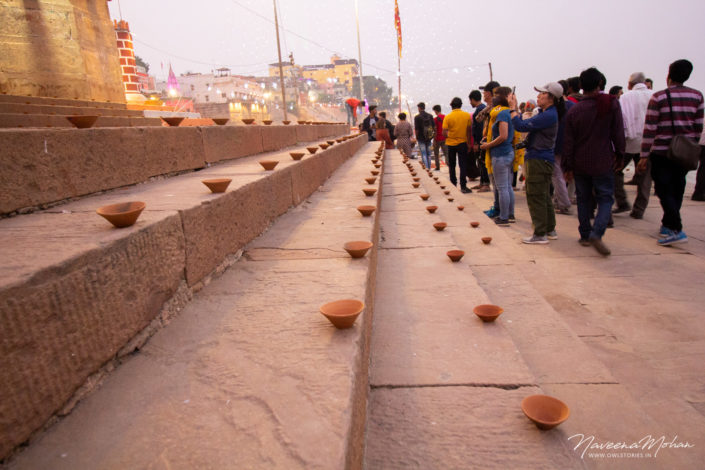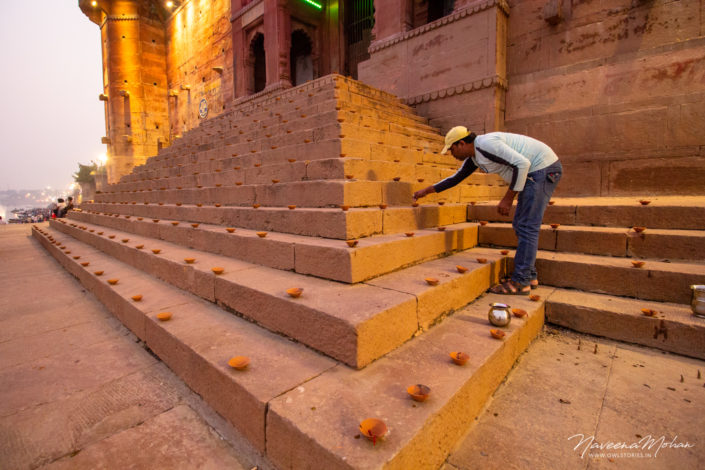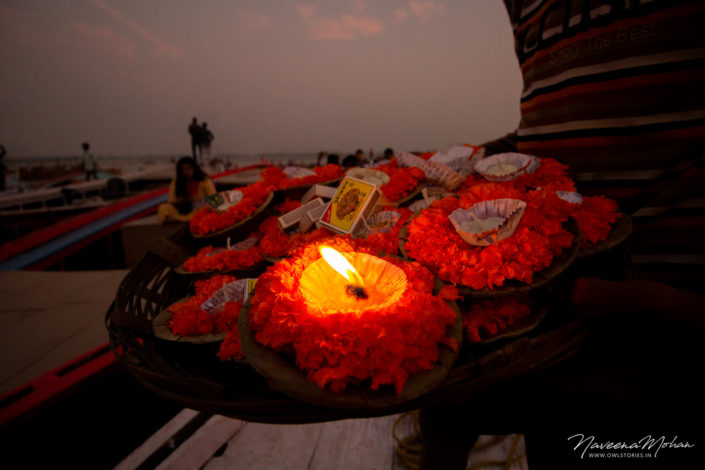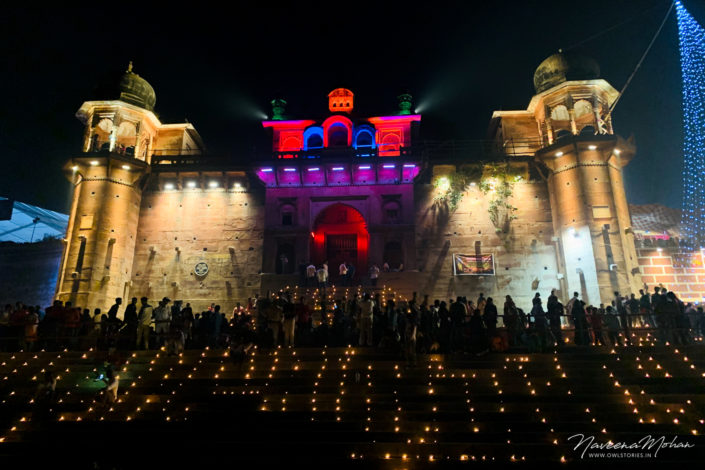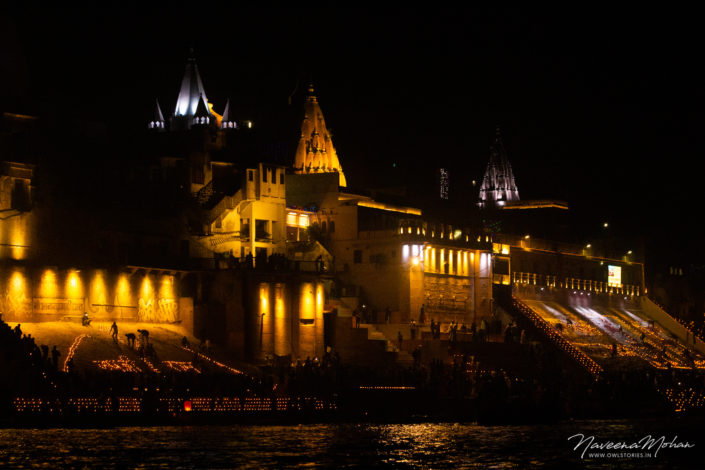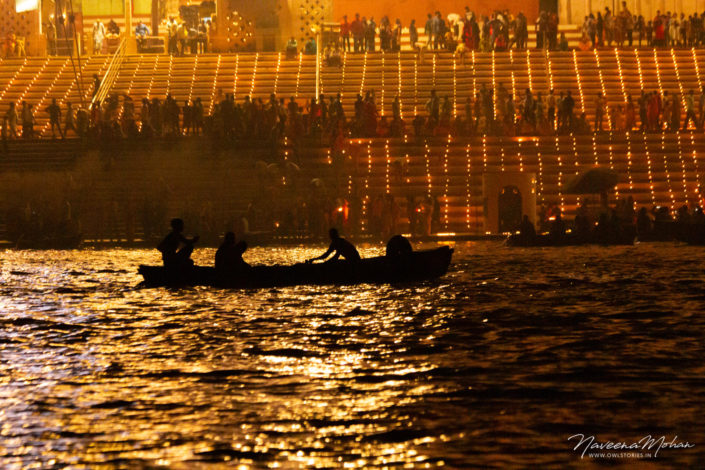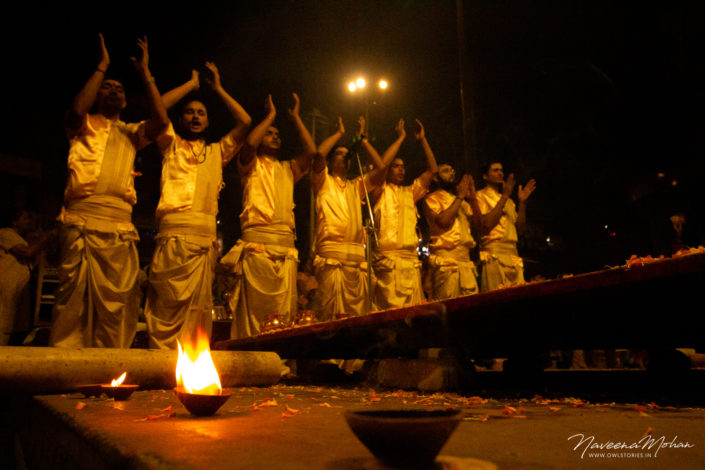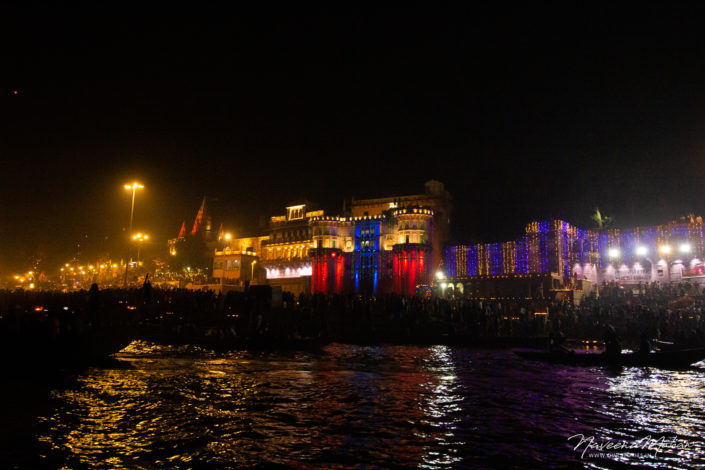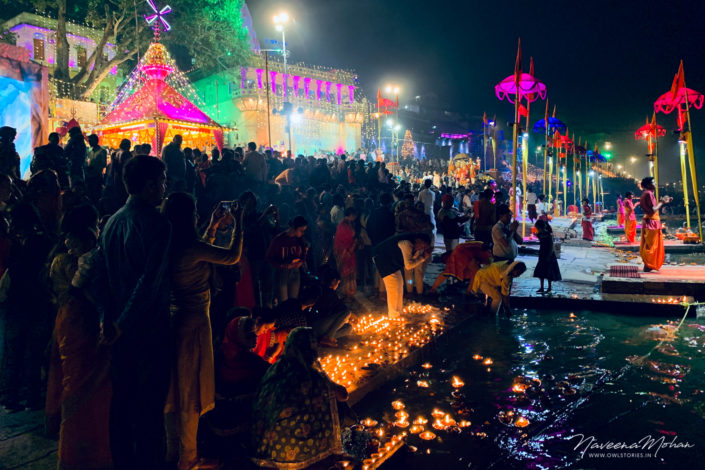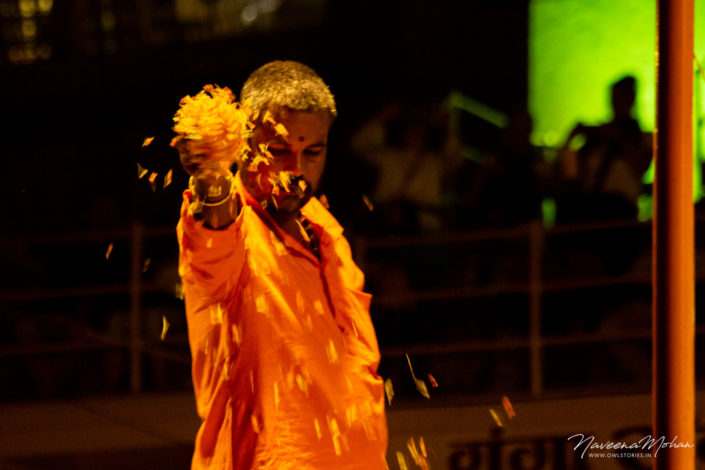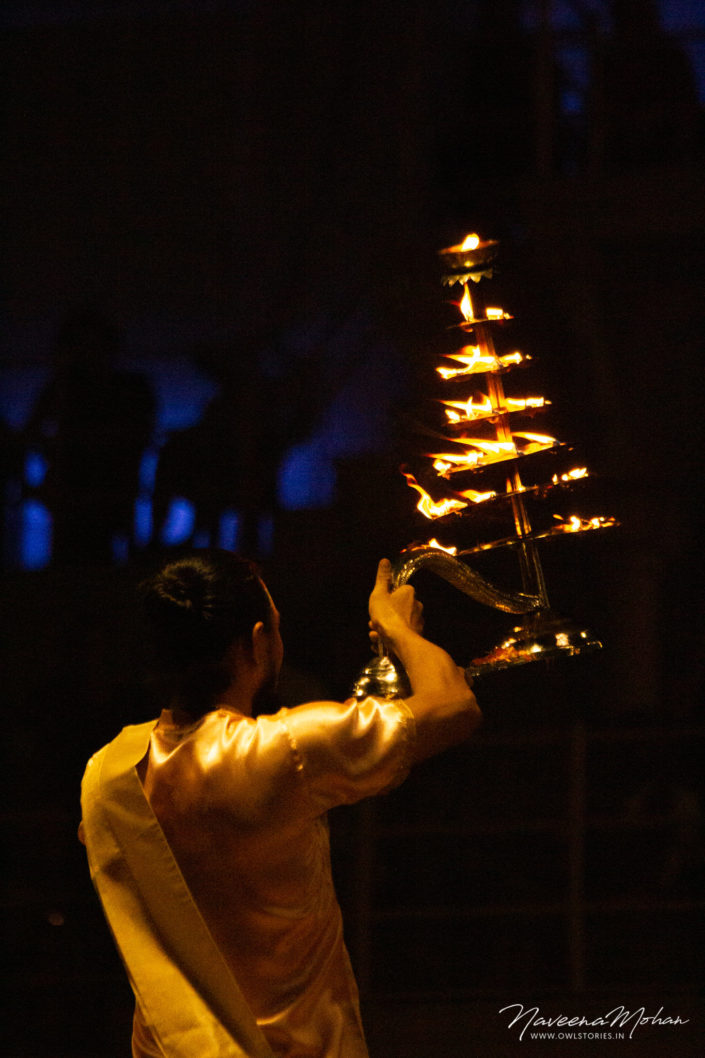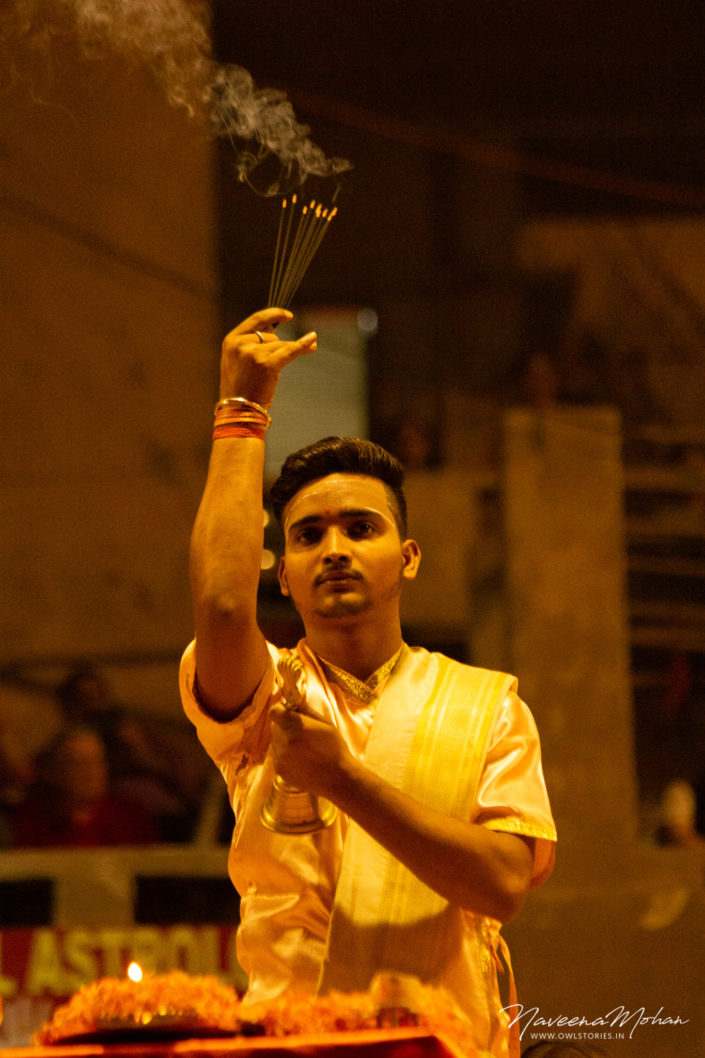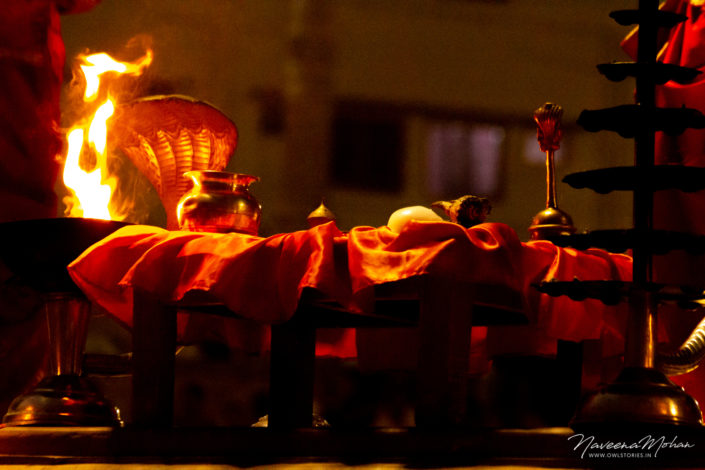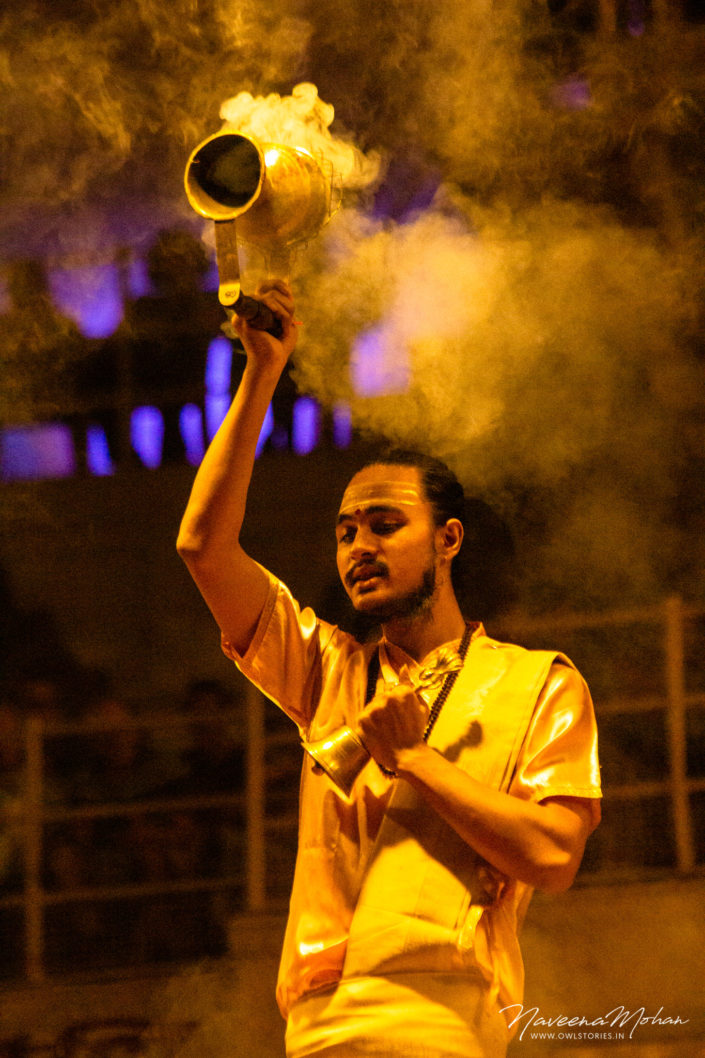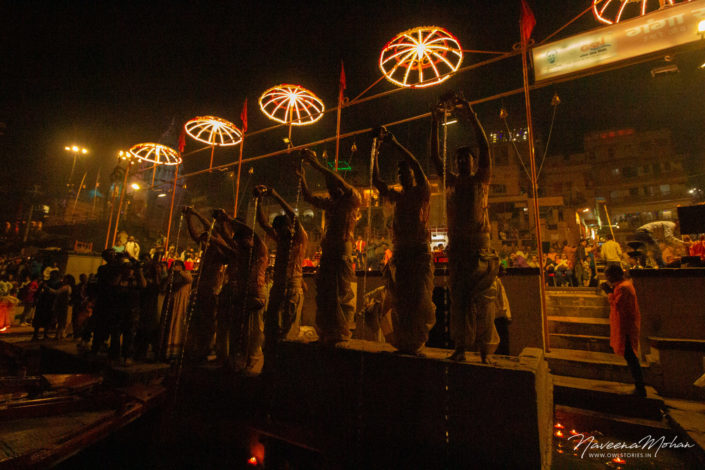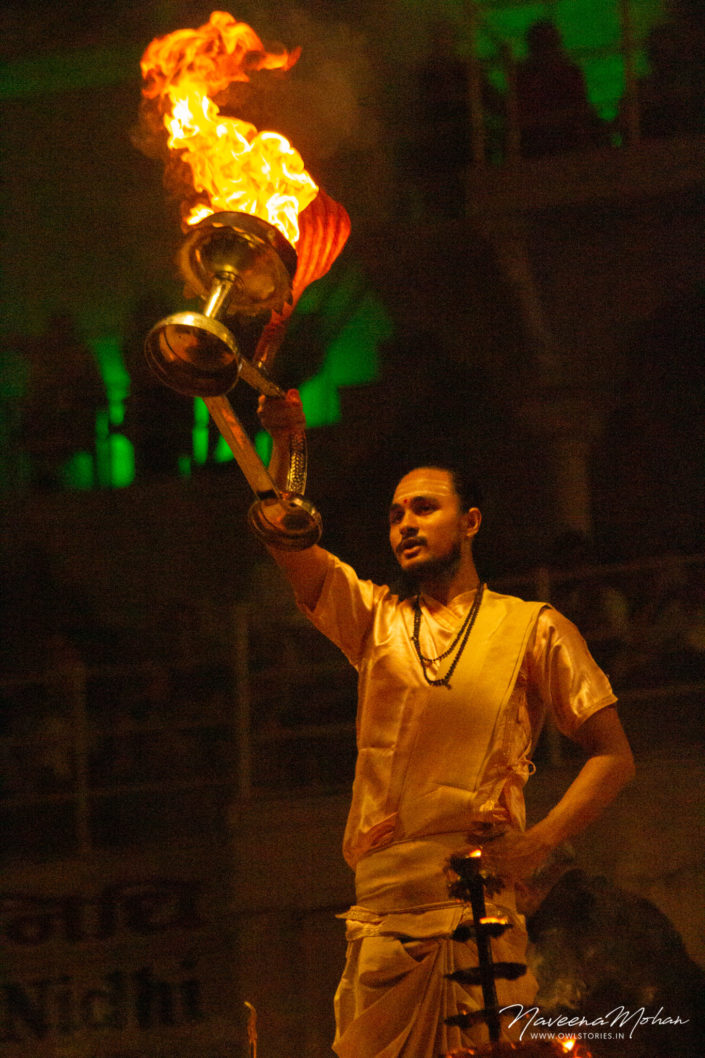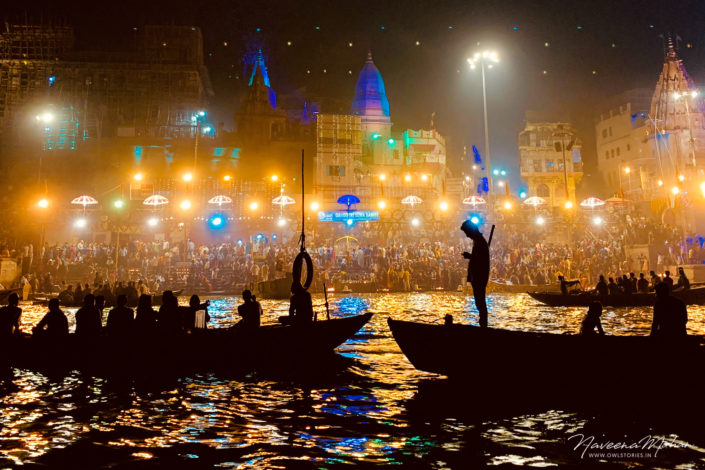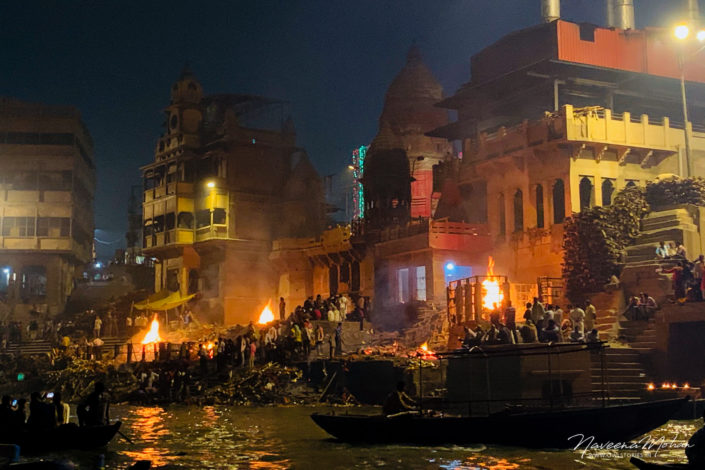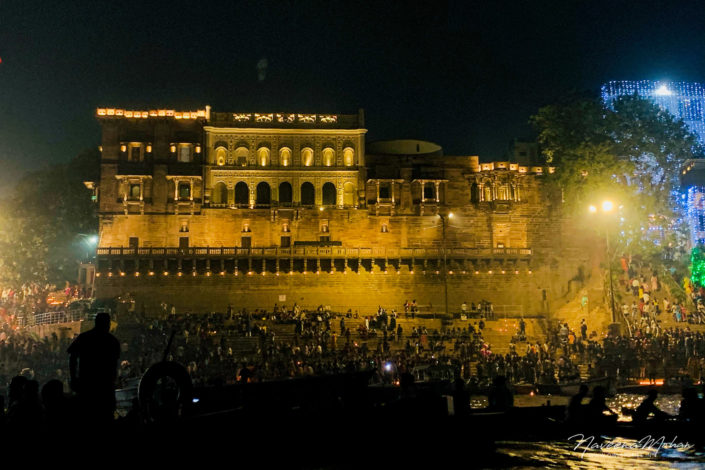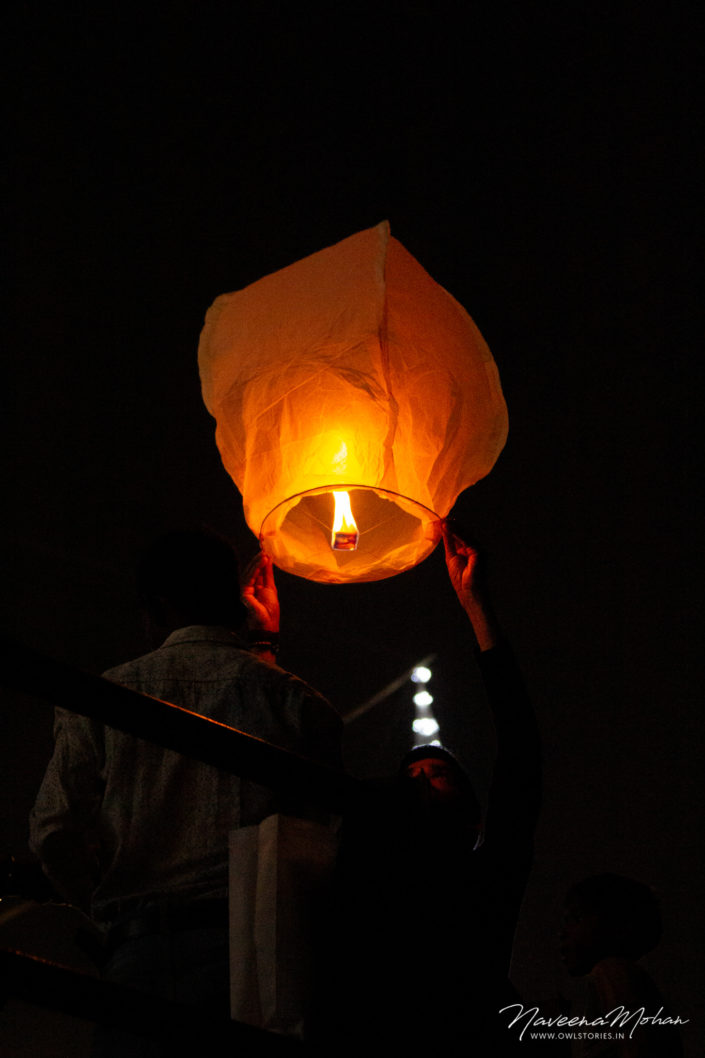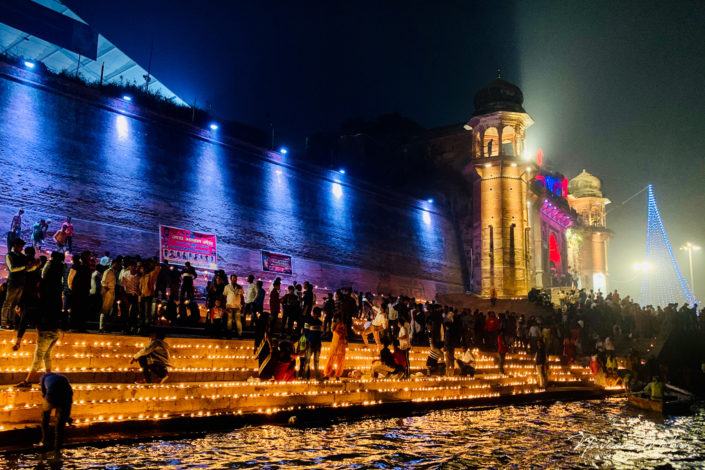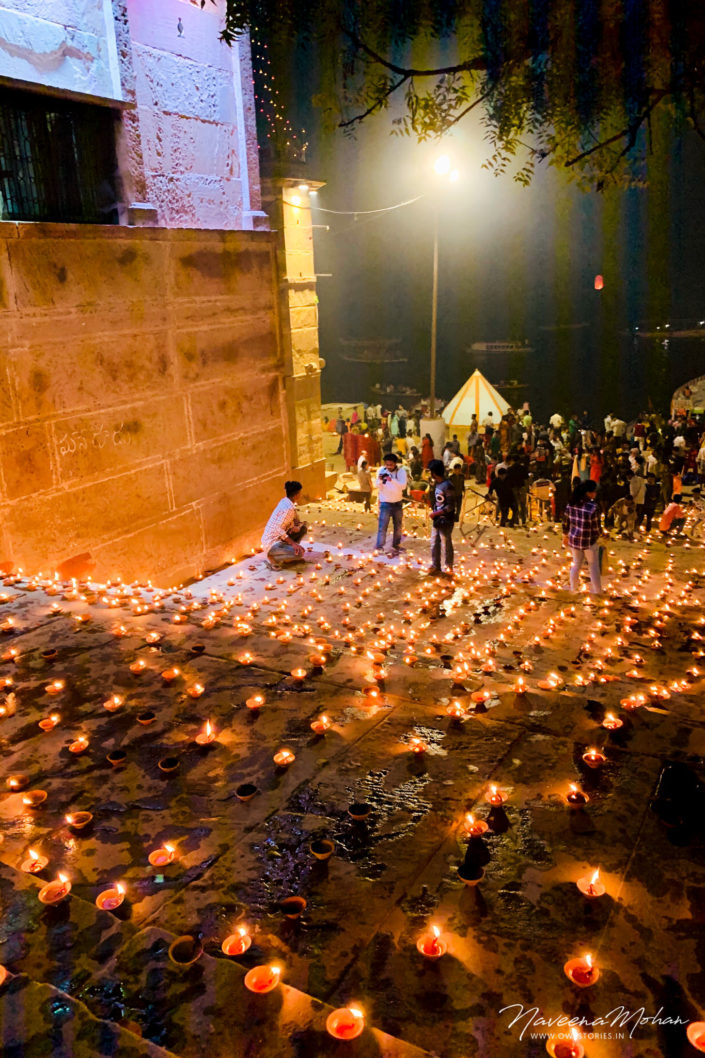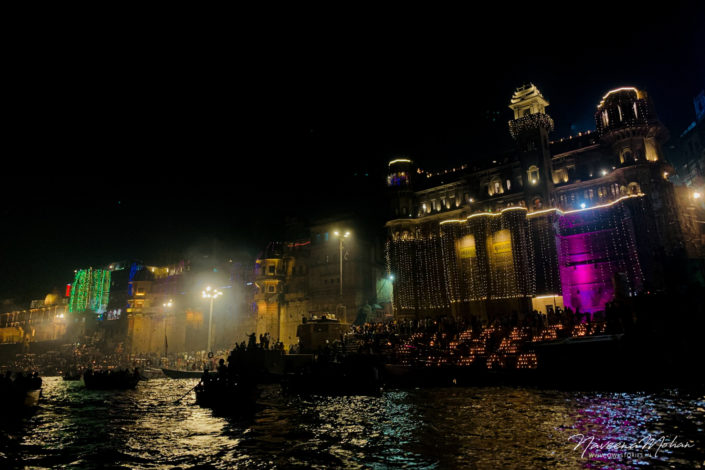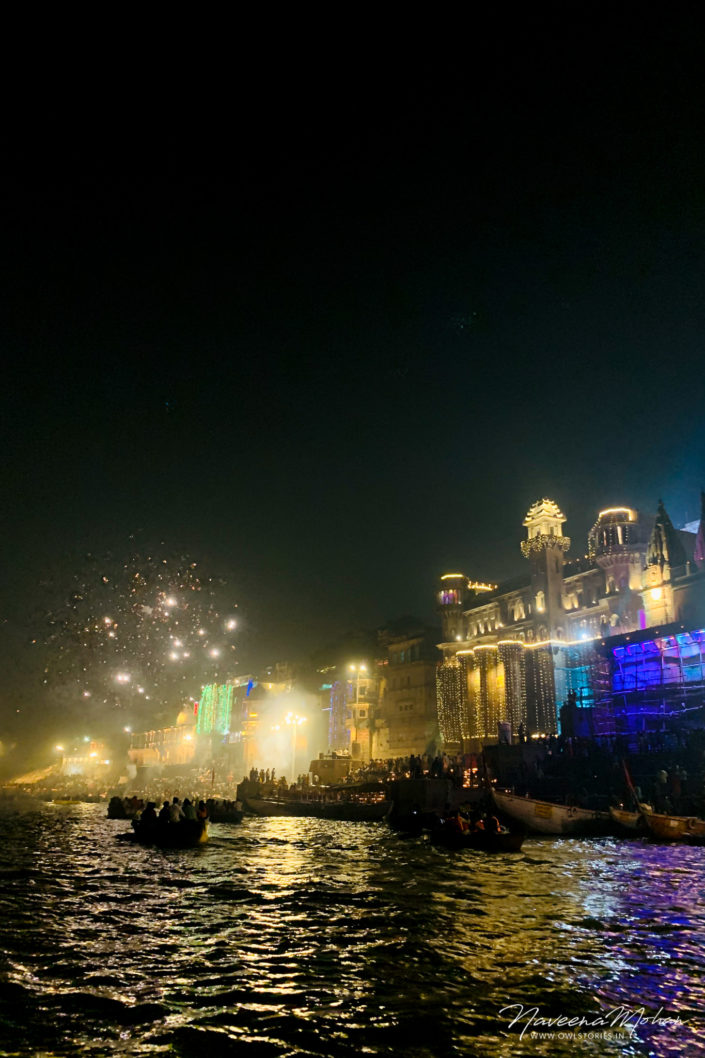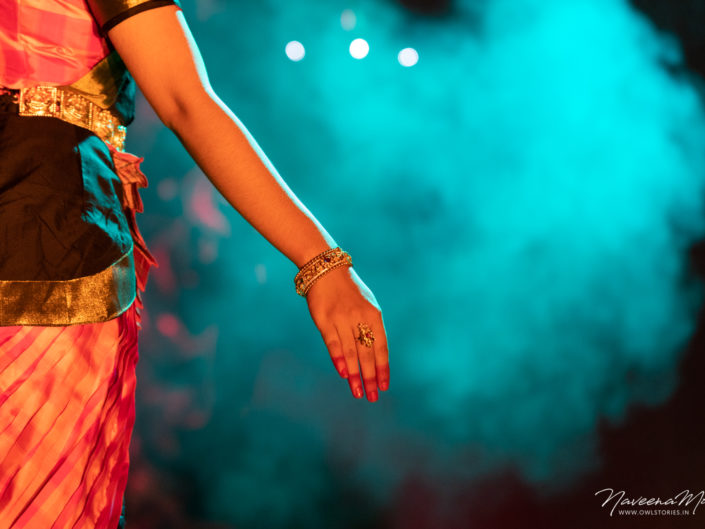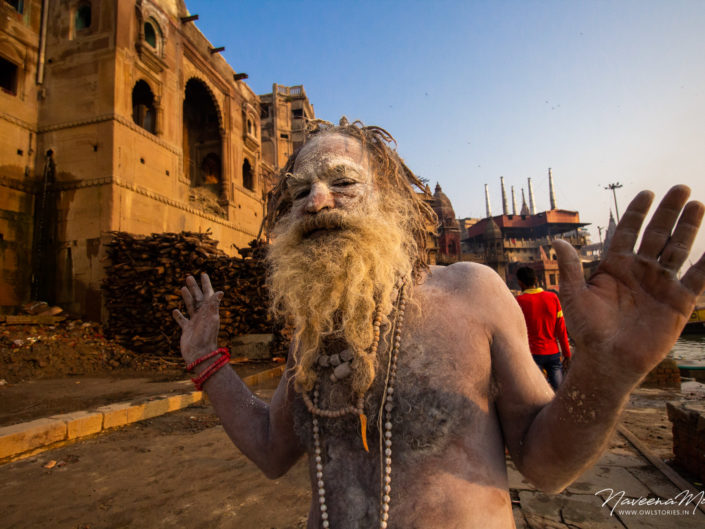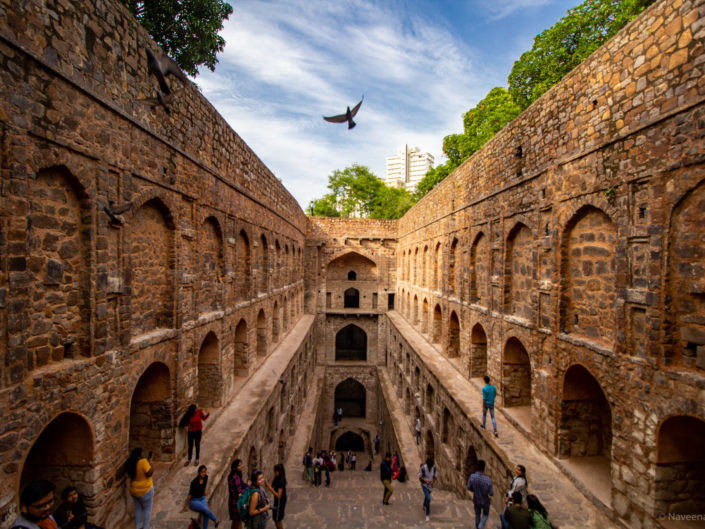-
OwlStories is a journal of events, journeys and experiences of this beautiful world by Naveena Mohan. About Me
Lorem ipsum dolor sit amet, consectetuer adipiscing elit. Aenean commodo.
Phone & Fax
Mon-Fri: 8:00-19:00,
Sat-Sun: 8:00-14:00(65)323-678-567
(65)323-678-568Address
732/21 Second Street, Manchester,
King Street,Kingston United Kingdom
places / ghats / Varanasi
Sacred city Varanasi
Kashi ke kankar Shankar samaan
(Each pebble in Kashi is as sacred as Shiva)
Stark Contrasts! Faces of the priests glow in the light of the huge aartis they hold in their raised hands, during the grand morning aarti ritual to Mother Ganga on the Assi ghat. A bright new day is welcomed with great devotion. Visitors gather in huge numbers to witness this mesmerising event and feel blessed. Life begins, even before the sun rises here. But a few ghats away, wood burns – day and night! Flames rise towards the sky – it’s the burning pyre of the departed soul. People around stare through the fire, mostly with their expressionless face! Ashes drowned in the Ganges, releases the soul from the life-death-rebirth cycle and opens the doors for heavens, is the popular belief. I am yet to visit another place where life and death is celebrated side by side!
Life begins and ends on a high note, in this holy place known by many names! Kashi, as it was known a few years back, is the religious and cultural centre of India. Derived from the Sanskrit word ‘prakasha – shining’, Kashi, the name translates to the shining city. Now, known to the world as Varanasi, Kashi is one the sapta puri (7 places) of pilgrimage and the holiest pilgrim cities for the Hindus. And as per Hindu mythology, Varanasi was founded by Shiva, along with Brahma and Vishnu. A centre of Saivism, it was Sri Adi Shankaracharya who established the worship of Shiva as an official sect here. Interestingly the origin of the name Varanasi is believed to be its location – between the river Varuna and Assi, hence Varanasi! But I seem to be fascinated by an entertaining story.
As I take a boat ride in the river, boatman Babu has a very fantastic explanation as to how the place came to be known as Varanasi! “It was courtesy Britishers, they visited this place and said it is ‘Very Nice’!! And then down the years, it became Varanasi; Very, Vara & Nice turned Nasi, VA-RA-NA-SI – do you get it?”, he quips with a charming smile to reconfirm if I truly believed in his theory!
Simple life,
sacred life
One travels to far and near places for the pleasant vistas, picturesque landscapes, to watch the clouds caress the mountain peaks or to listen to the chirps of the colourful birds, in search of great food or to experience some adventure or thrilling activities. But a trip to Varanasi is a different experience altogether.
The oldest city in the world, Varanasi is located on the banks of river Ganga or the Ganges, in the state of Uttar Pradesh in India. The Ganges, the river of salvation and Varanasi are synonymous. Varanasi is now well known as a sacred city of temples but it is nothing like the temple towns or cities down south, in India. The temples of Kashi Vishwanath, Sankat mochan and Durga temple draws pilgrims by the thousands. It is also the significant symbol of Religion & Traditions, Art & Culture, Education and many such. But the heart of Varanasi is the holy river Ganga and it’s ghats.
The Varanasi I visited can be easily divided into 2 parts. The ghat and the river – the major part, and the lanes running parallel to the ghats and the bustling city another integral part. It takes some time to understand this city and its way of life. As one walks along the ghats, it takes some more time and patience to get used to surroundings and the sights. Life thrives here on the banks of the river Ganga. A holy dip in the Ganges is the foremost activity along the ghats, ablutions therein and washing away all the sins, it’s as simple as that if one believes! Boats anchored to the ghats and many already sailing in the river with the visitors is the most common sight at any given time of the day. Rows of colourful clothes – frocks, sarees, petticoats, blouses, lungis and even the saffron robes drying out in the sun, adorn the ghats on a daily basis. Buy the aarti flowers and diyas if you please or the malas of rudraksh or other colourful beads from the hawkers walking along the ghats. Take care not to bump into a waiting cow on the steps of the ghat or step on the unmindful tail lying by the side of its owner; else, get bitten or barked at! watch the attractive graffiti on those huge stone walls as you sail along the ghats in a boat. Not a minute goes without something interesting passing by your sight as you spend time here.
The lanes running parallel behind the ghats are equally interesting. Narrow lanes with shops on either side, temples full of devotees, markets buzzing with activities, busy food stalls dishing out local snacks pooris and kachoris with curry to the hungry visitors, hot jalebis make their way out of the kadai and make a quick stop in the sugar syrup before landing in a plate to be grabbed by the person with a sweet tooth – All the food stalls might grab your attention but a moment’s lapse might lead one to leave an imprint of your precious footstep on the freshly laid cow dung on the street; a cow at a distance surveys the shops for something interesting even as a baba waits for his cup of chai by the roadside tea-stall. Colourful cobbled-stone lanes with ancient residences and a few Akhadas (ashrams, and not the where the wrestlers practice) make their presence felt, only to those who care to walk and explore the by-lanes of the city. A mini south-Indian locality tucked away in the heart of these by-lanes is a photographer’s delight. Life along the ghats and the by-lanes is uncomplicated and mostly peaceful.
Drive away from the ghats, into the bustling city; the tuk-tuks, rickshaws, crowded streets, constantly honking vehicles and the dusty roads paint a different picture of the city. It’s typical busy city life. Varanasi is also the significant symbol of Religion & Traditions, Art & Culture, Education and many such. A different facet of this sacred city happens to be its role as the major industrial hub. It is known for perfumes, ivory works, and sculpture but most popular for its silk fabrics & sarees. A rickshaw ride in the city may offer a sneak peek into the city life of Varanasi and thereby completing an easy sightseeing formality, too. For those who dare to still curiously find they way in the streets, could be rewarded with some clickety-clack rhythmic loom-music, more from the power looms and very less enthusiastic clack from one of the last surviving handlooms. Else, the regular visits to the shopping streets and markets are the norm of any travel itinerary.
Morning Ganga aarti at the Assi ghat, sunrise boat ride, walking the steps of all the ghats while making my way through the narrow by-lanes and watching the activities silently perching on one of those steps at a distance, the shining lights and the oil lamps on the ghats shrouded by the darkness as the sunsets and the Sanskrit chants that bring alive the Dashashwamedh ghat once again during the evening aarti – Blissful! When you leave Varanasi, a piece of Varanasi, a big one at that, you take home along with you.
When the gods descend,
it has to be special
Dev Deepavali, is the festival of lights believed to be celebrated by the gods themselves. Celebrated approximately 15 days after the main festival of deepavali, Dev Deepavali is a grand affair in the sacred city of Varanasi. Falling on the full moon day of the month of Kartika of the Hindu calendar, generally in the month of November, it is believed that the gods descend to earth on this day to bathe in river Ganges on this day.
It is the tradition of taking the customary dip in the holy Ganges even before the first rays of the sun is seen, offering prayers, visiting the temples on the ghats and following the rituals of the festival, lighting the entire ghats and buildings surrounding the ghats with diyas/oil lamps in the evening, has turned this event int the recent times, into a major attraction for of visitors to this revered place. The evening Ganga aarti at the famed Dashashwamedh Ghat during this festival is a major atttraction among the tourists. The sight of a million diyas lit on the entire stretch of the ghats and the cultural activities organised during these celebrations enthrall the visitors.
